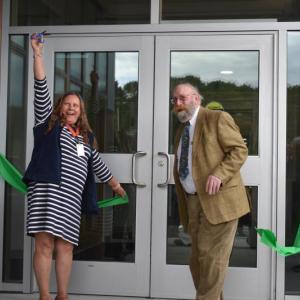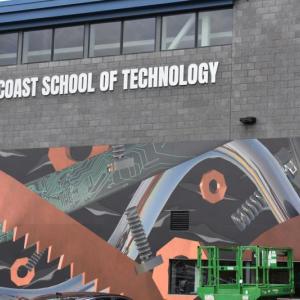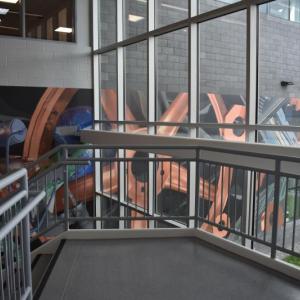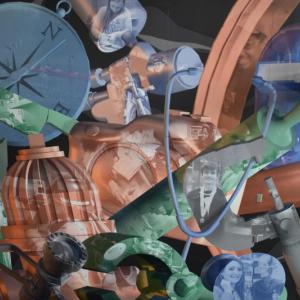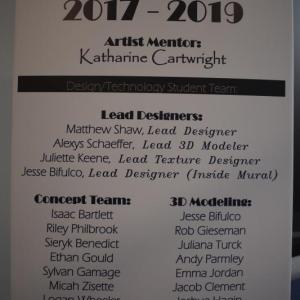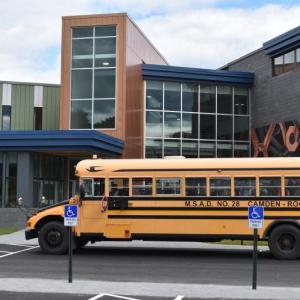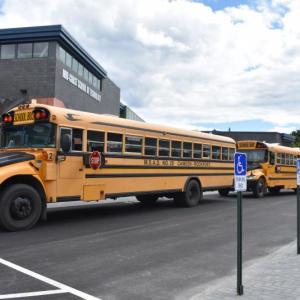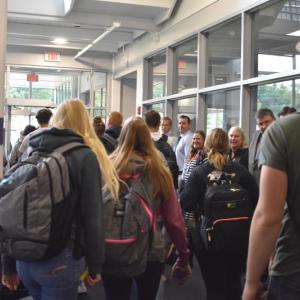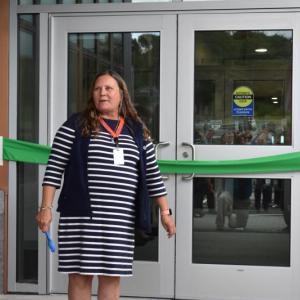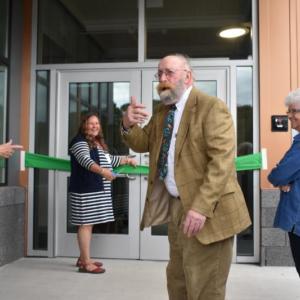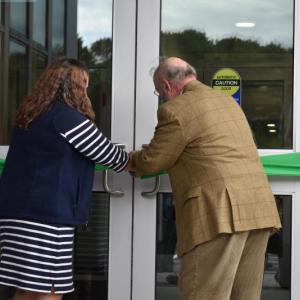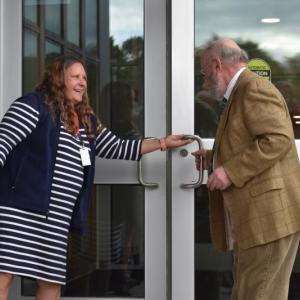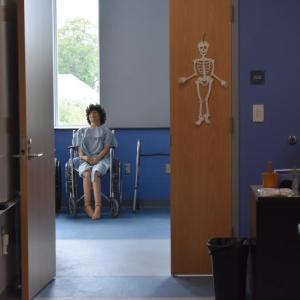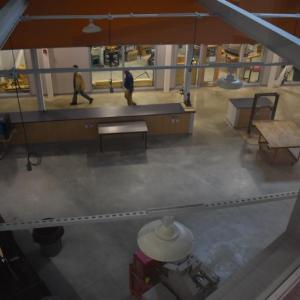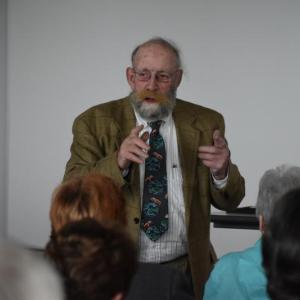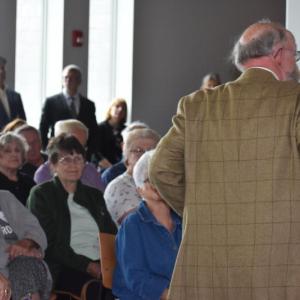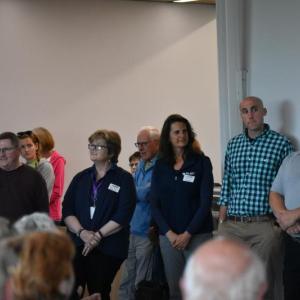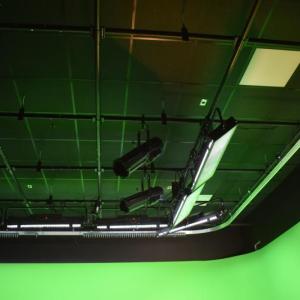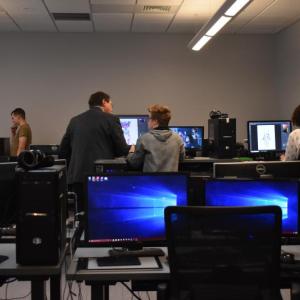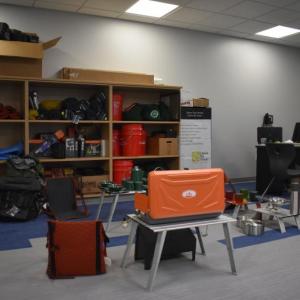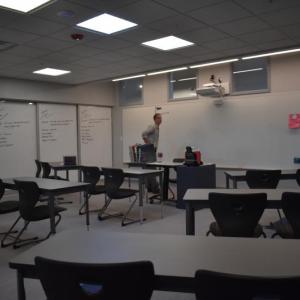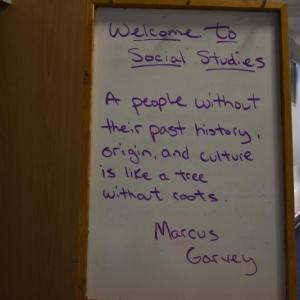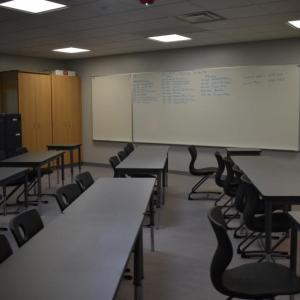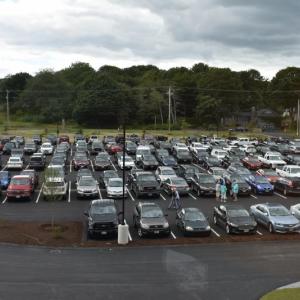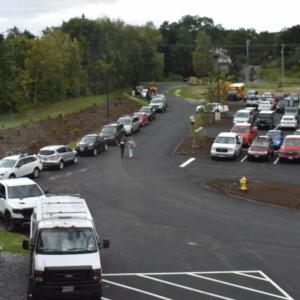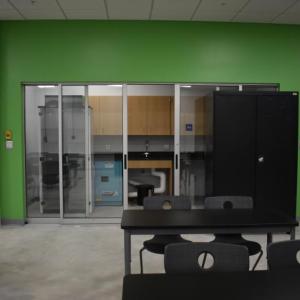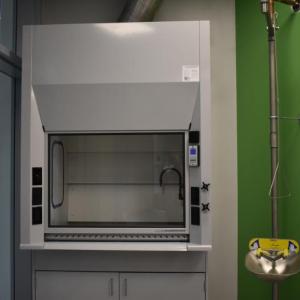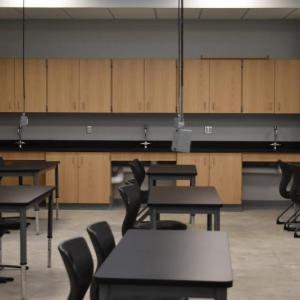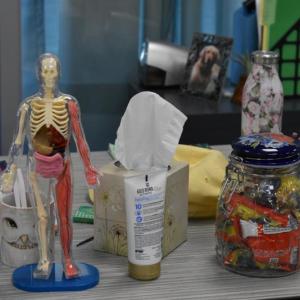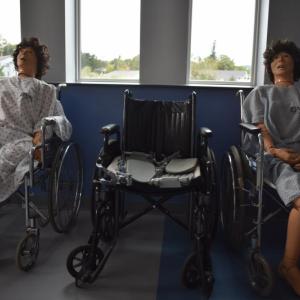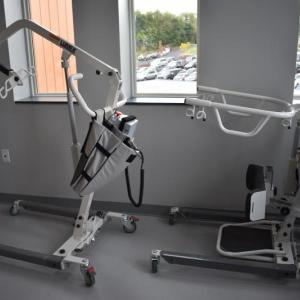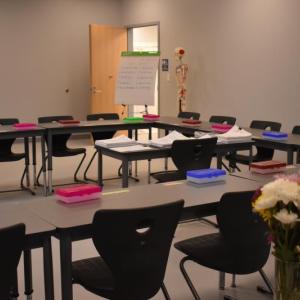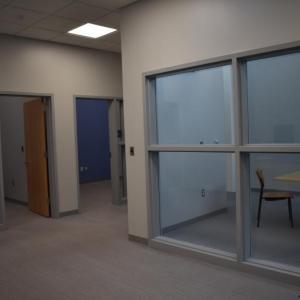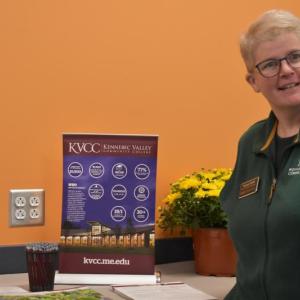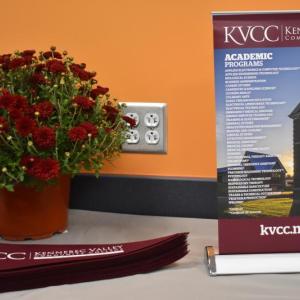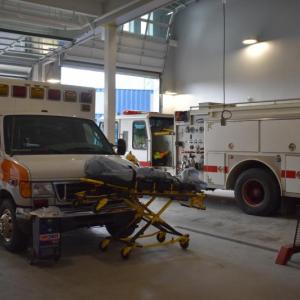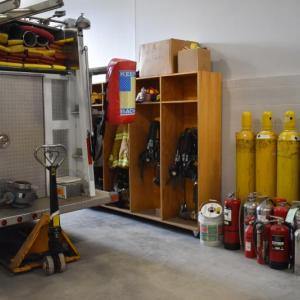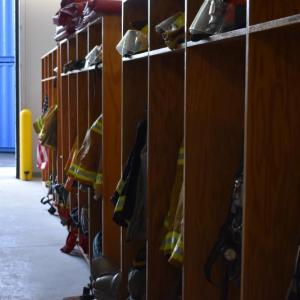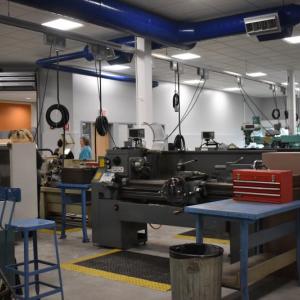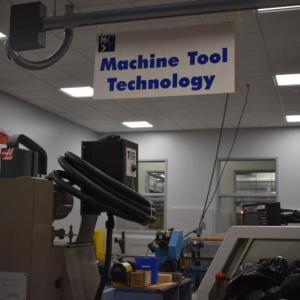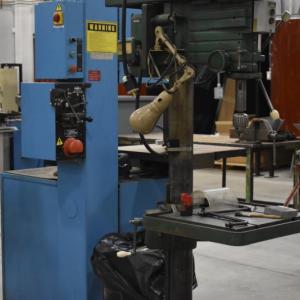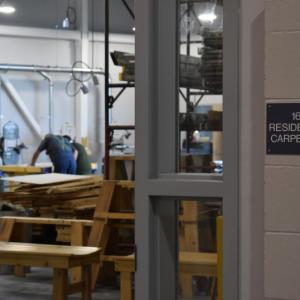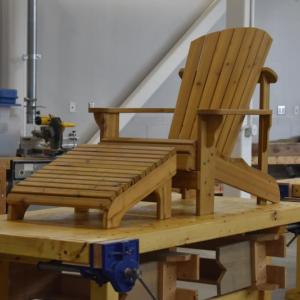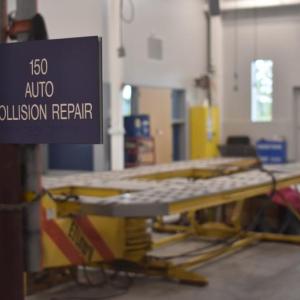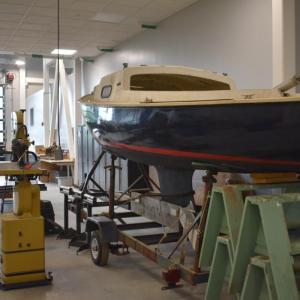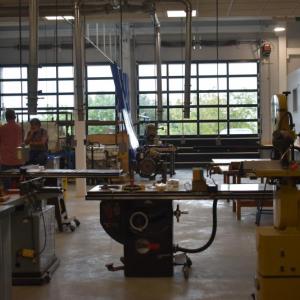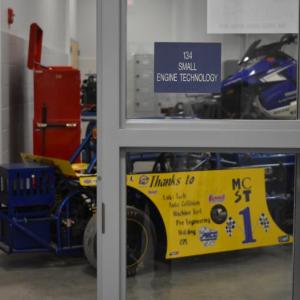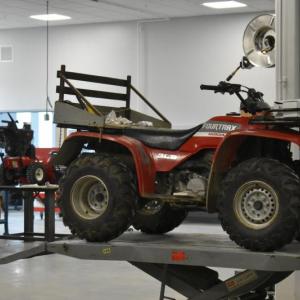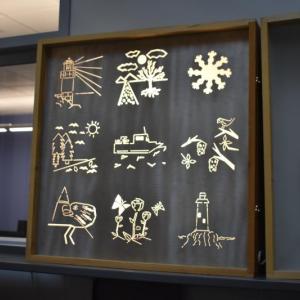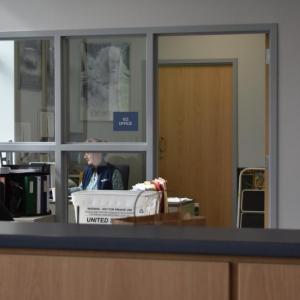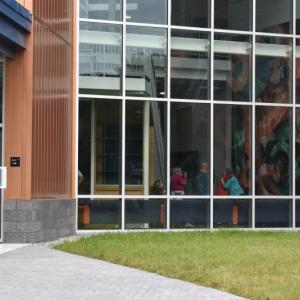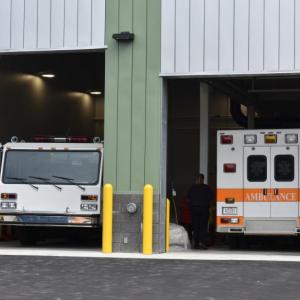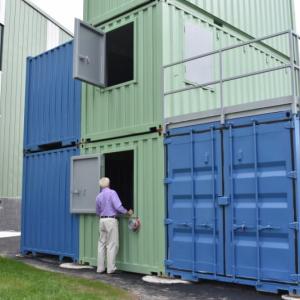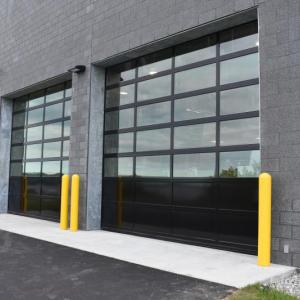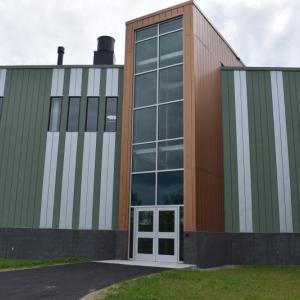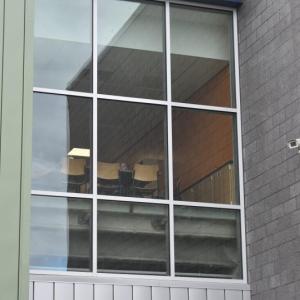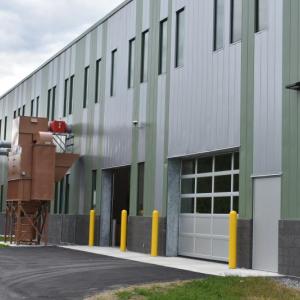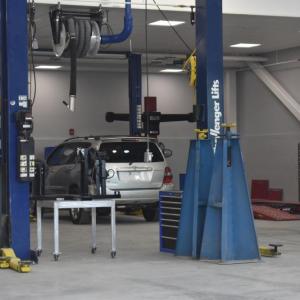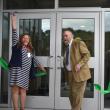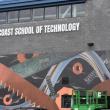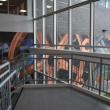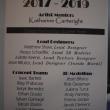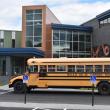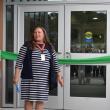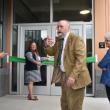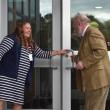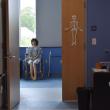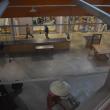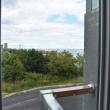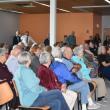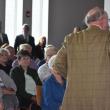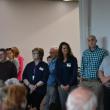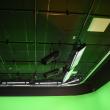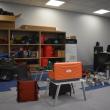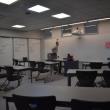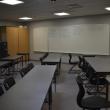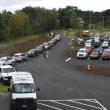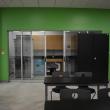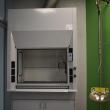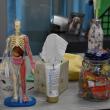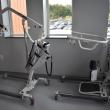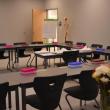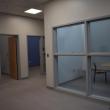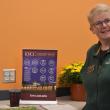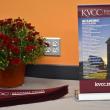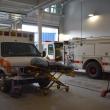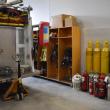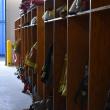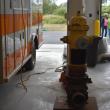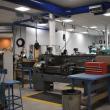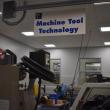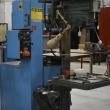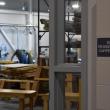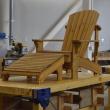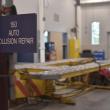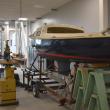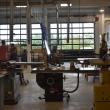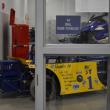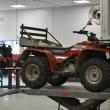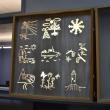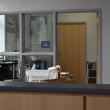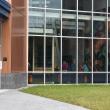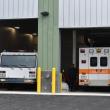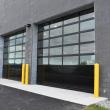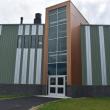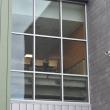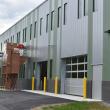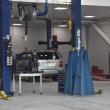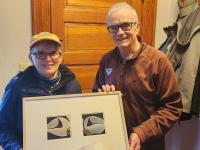Mid-Coast School of Technology opens new building, recognizing value of basic journeymen skills
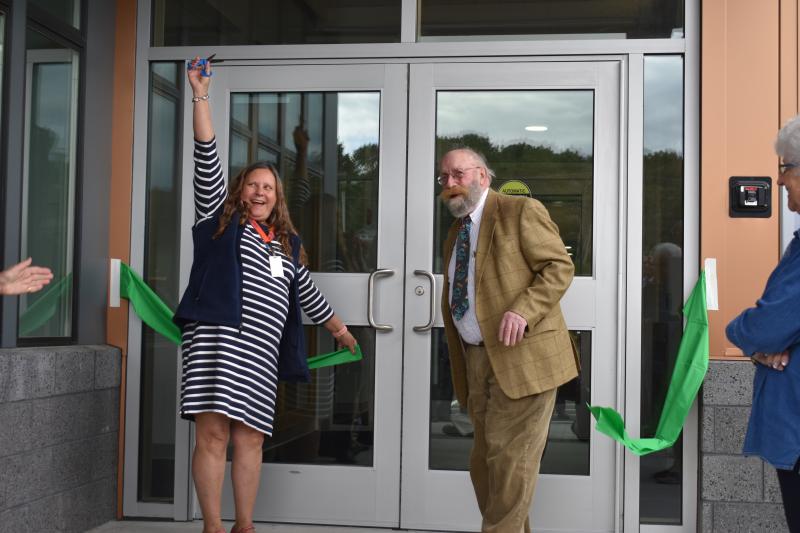 Mid-Coast School of Technology Director Beth Fisher and Board member Jerry White cut a ribbon to welcome the community into the new school building. (Photo by Sarah Thompson)
Mid-Coast School of Technology Director Beth Fisher and Board member Jerry White cut a ribbon to welcome the community into the new school building. (Photo by Sarah Thompson)
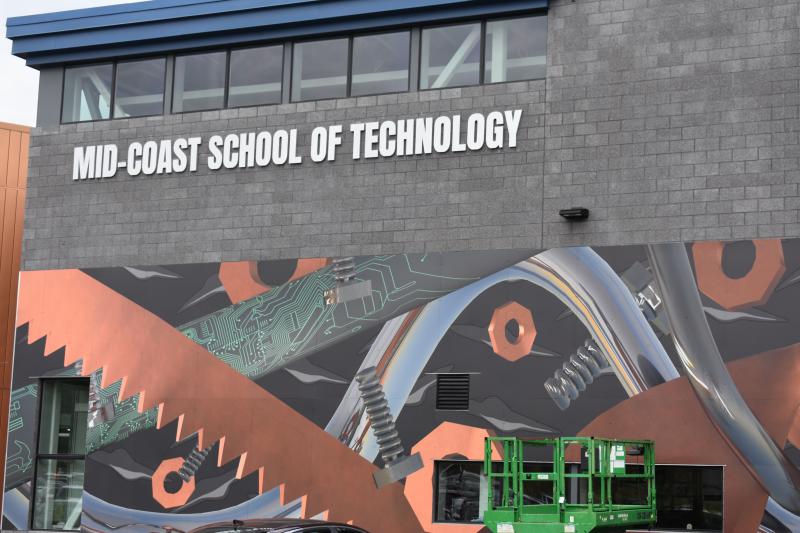 (Photo by Sarah Thompson)
(Photo by Sarah Thompson)
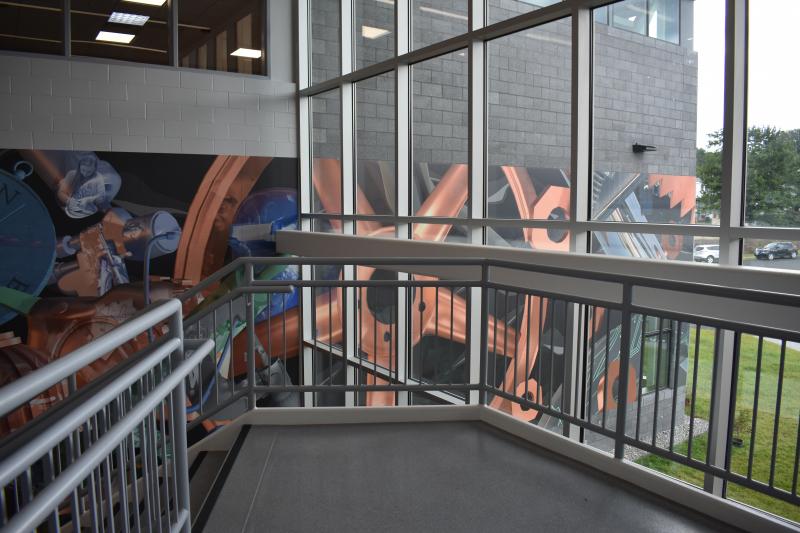 This mural, designed by students, extends inside and out. (Photo by Sarah Thompson)
This mural, designed by students, extends inside and out. (Photo by Sarah Thompson)
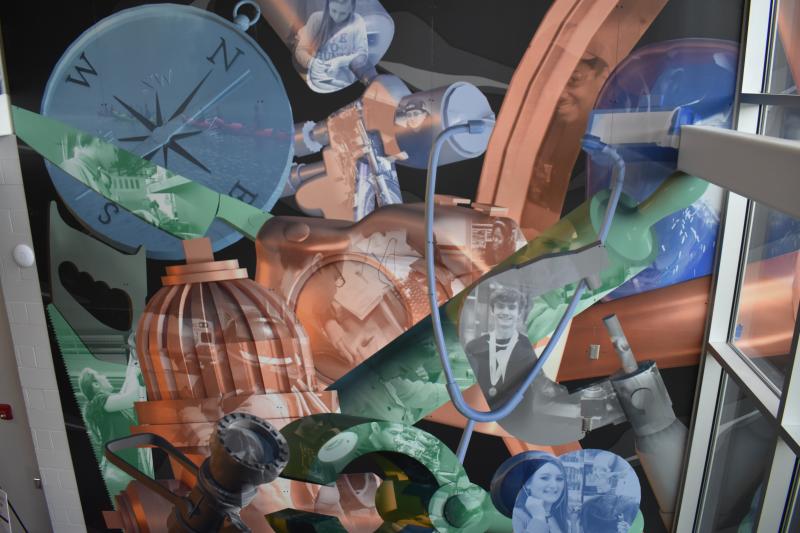 (Photo by Sarah Thompson)
(Photo by Sarah Thompson)
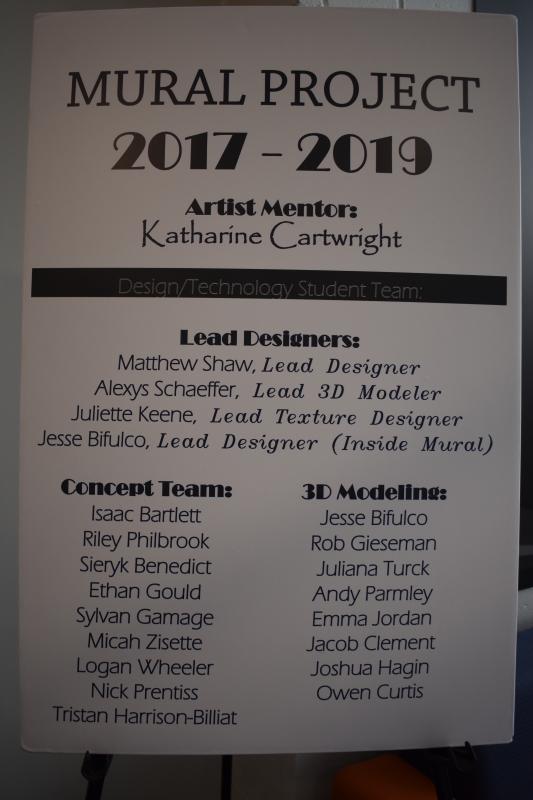 (Photo by Sarah Thompson)
(Photo by Sarah Thompson)
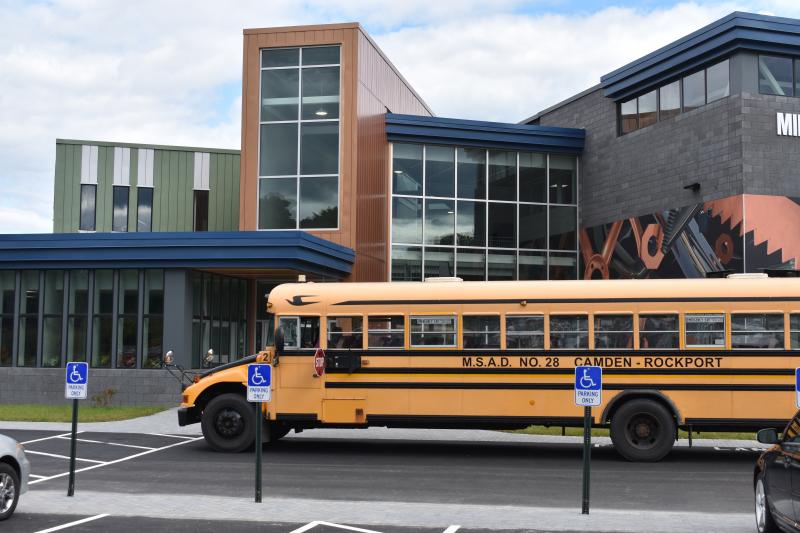 (Photo by Sarah Thompson)
(Photo by Sarah Thompson)
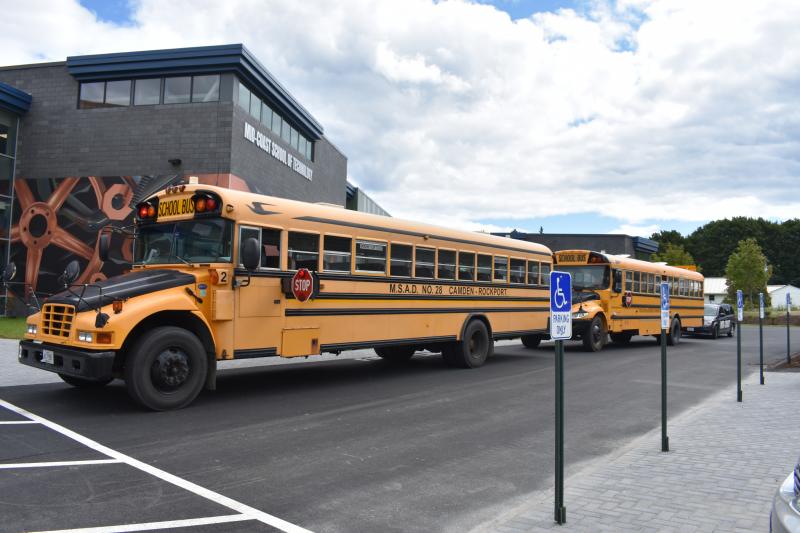 (Photo by Sarah Thompson)
(Photo by Sarah Thompson)
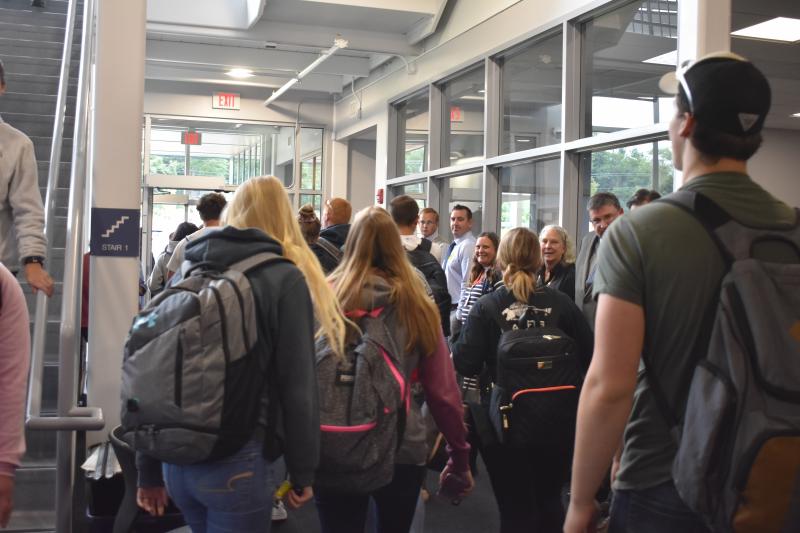 Students exit for the day prior to the community entering for a glimpse. (Photo by Sarah Thompson)
Students exit for the day prior to the community entering for a glimpse. (Photo by Sarah Thompson)
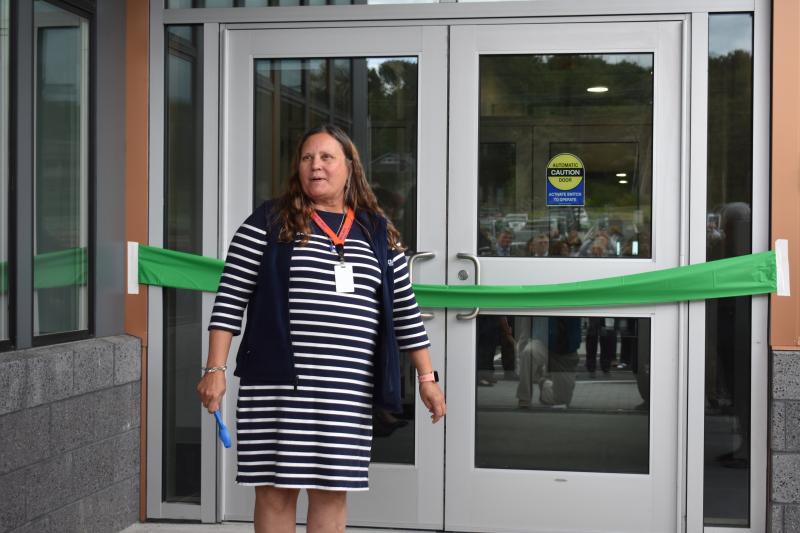 (Photo by Sarah Thompson)
(Photo by Sarah Thompson)
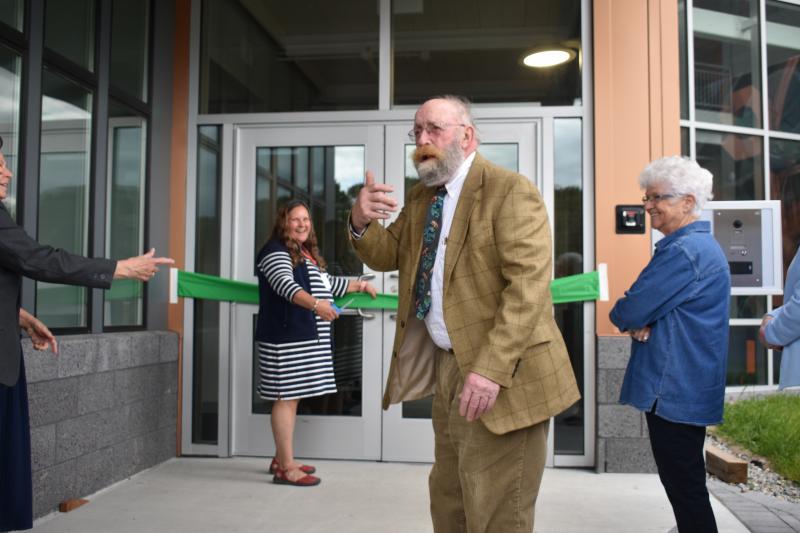 (Photo by Sarah Thompson)
(Photo by Sarah Thompson)
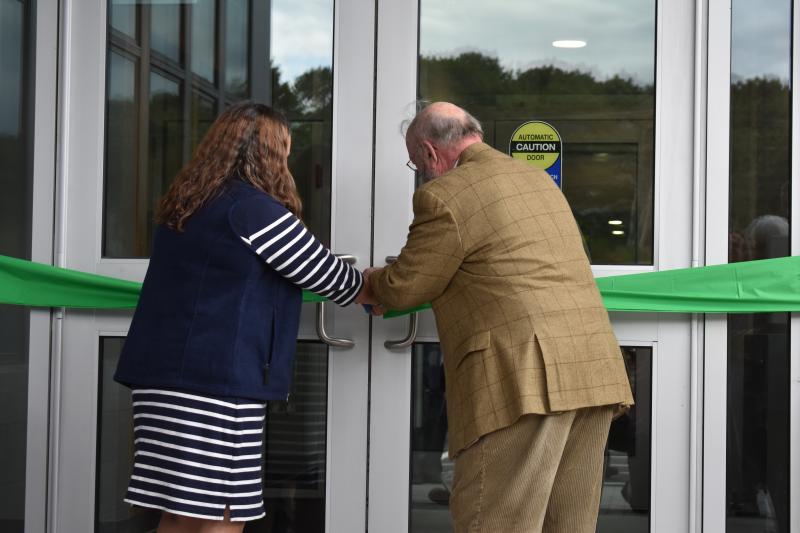 (Photo by Sarah Thompson)
(Photo by Sarah Thompson)
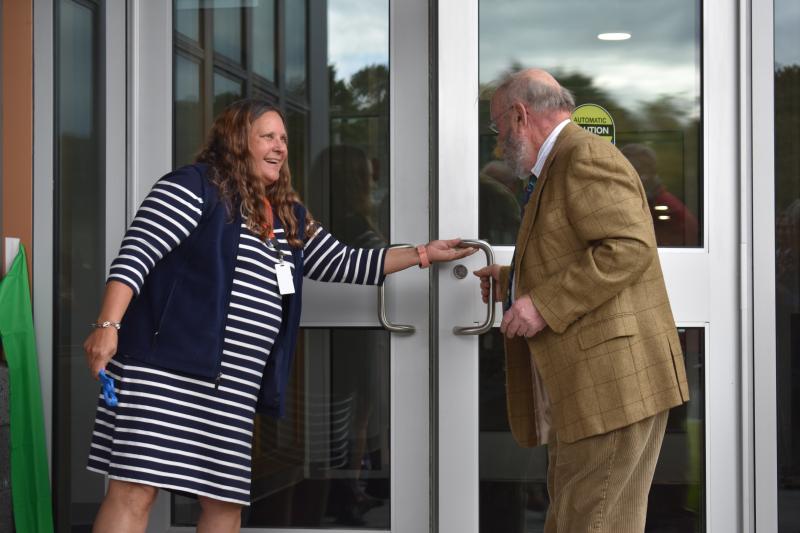 (Photo by Sarah Thompson)
(Photo by Sarah Thompson)
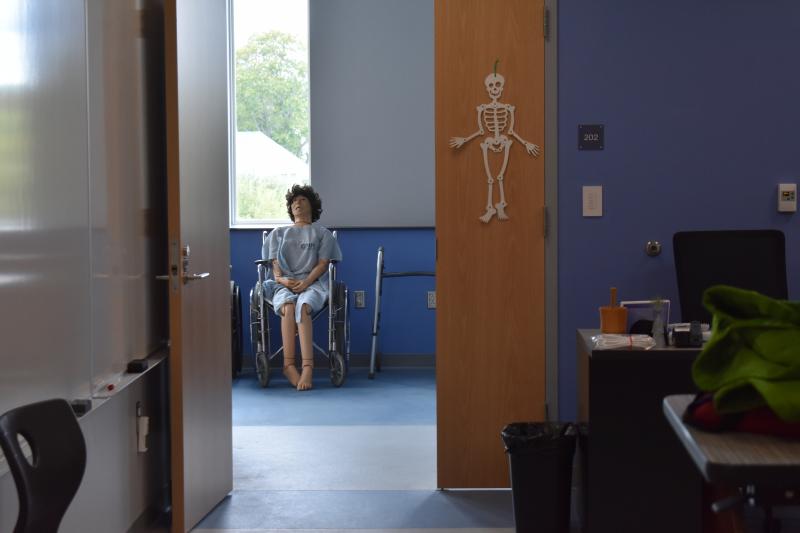 This chap isn’t exactly excited to be in the new CNA room. (Photo by Sarah Thompson)
This chap isn’t exactly excited to be in the new CNA room. (Photo by Sarah Thompson)
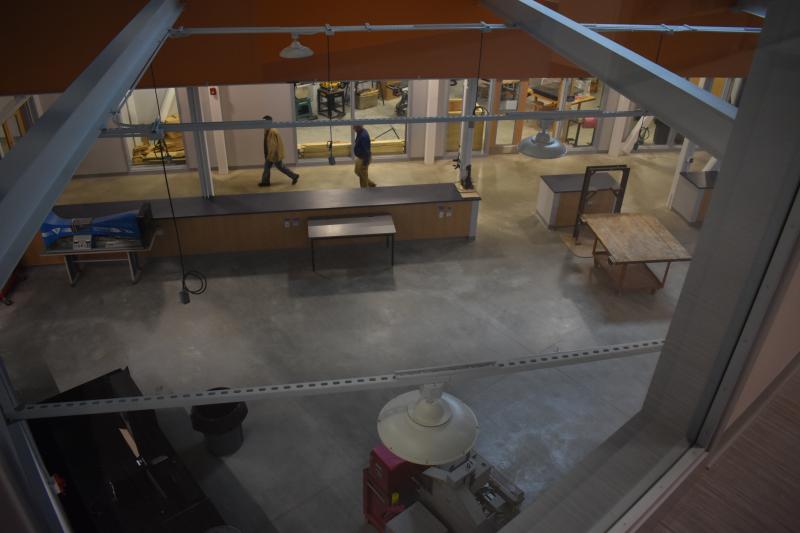 Looking down from above. (Photo by Sarah Thompson)
Looking down from above. (Photo by Sarah Thompson)
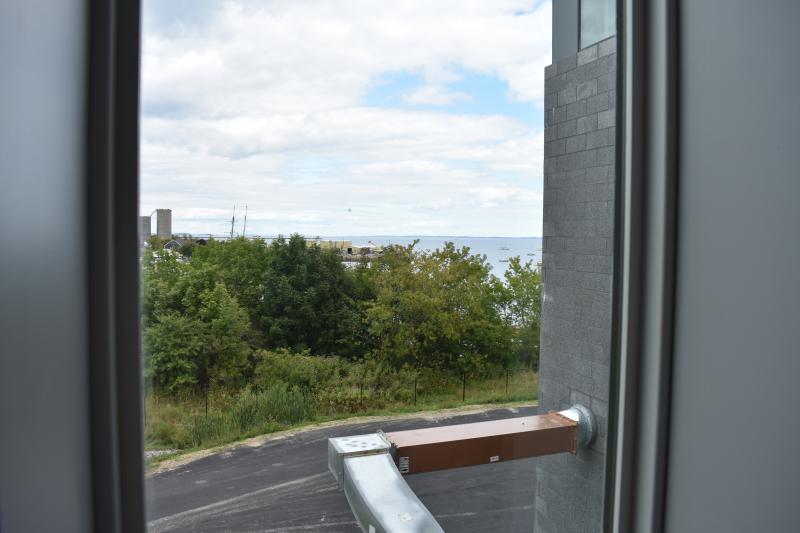 Oh, what a view. (Photo by Sarah Thompson)
Oh, what a view. (Photo by Sarah Thompson)
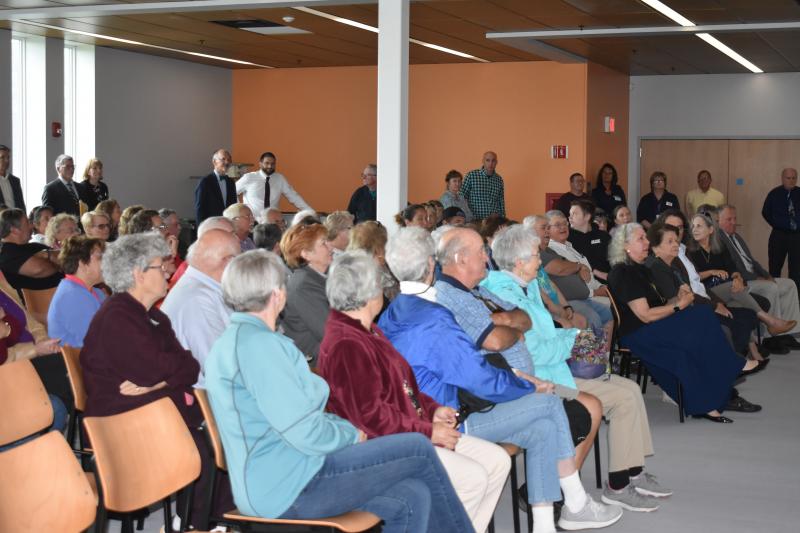 Stakeholders, representatives, and friends thank each other for their involvement in the school’s resurrection. (Photo by Sarah Thompson)
Stakeholders, representatives, and friends thank each other for their involvement in the school’s resurrection. (Photo by Sarah Thompson)
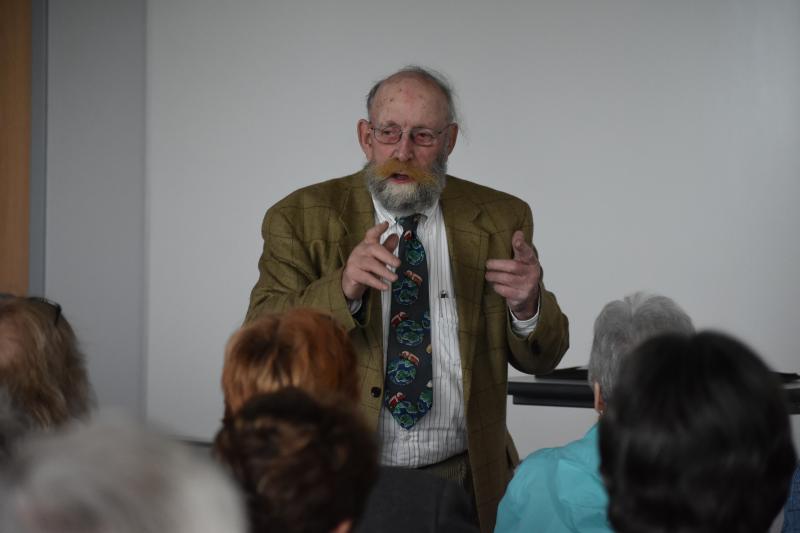 Board member Jerry White. (Photo by Sarah Thompson)
Board member Jerry White. (Photo by Sarah Thompson)
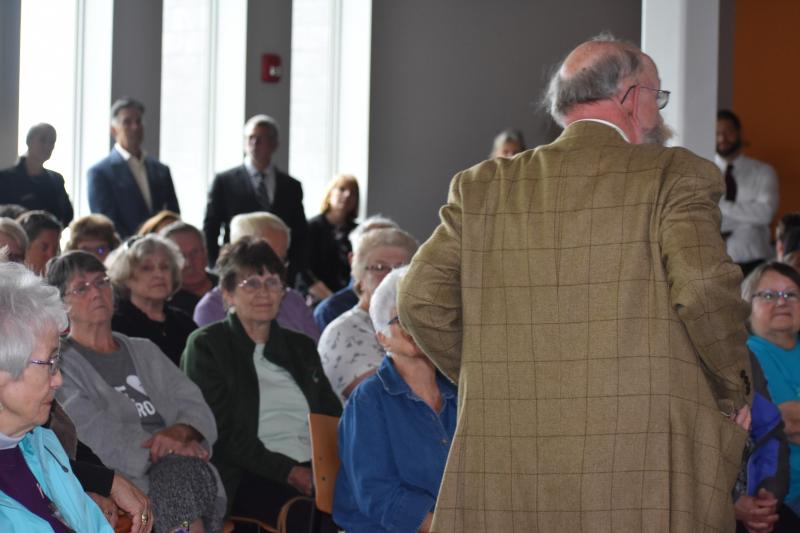 (Photo by Sarah Thompson)
(Photo by Sarah Thompson)
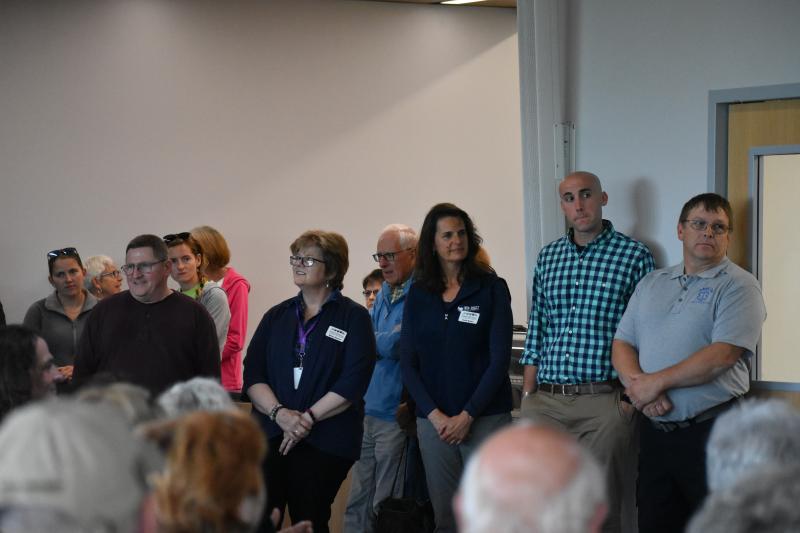 Some of the MCST teachers. (Photo by Sarah Thompson)
Some of the MCST teachers. (Photo by Sarah Thompson)
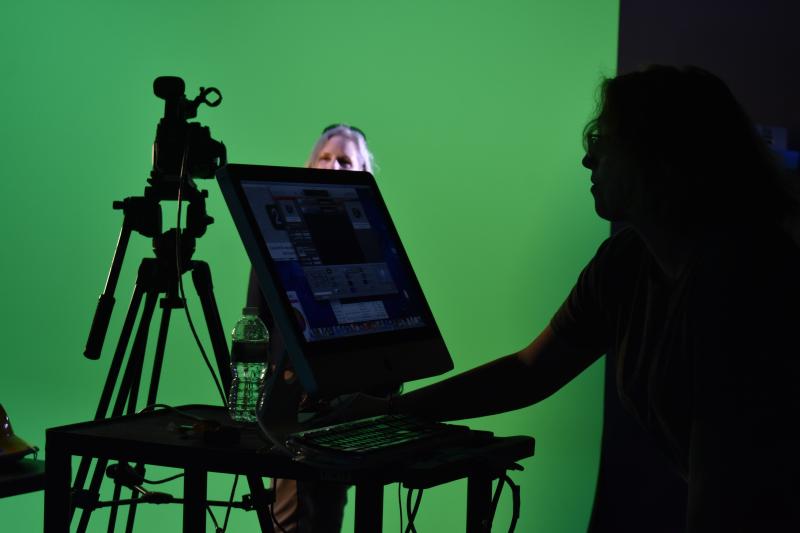 People touring the Design and Technology room walk along one green wall....(Photo by Sarah Thompson)
People touring the Design and Technology room walk along one green wall....(Photo by Sarah Thompson)
 ...and appear on an opposite screen. (Photo by Sarah Thompson)
...and appear on an opposite screen. (Photo by Sarah Thompson)
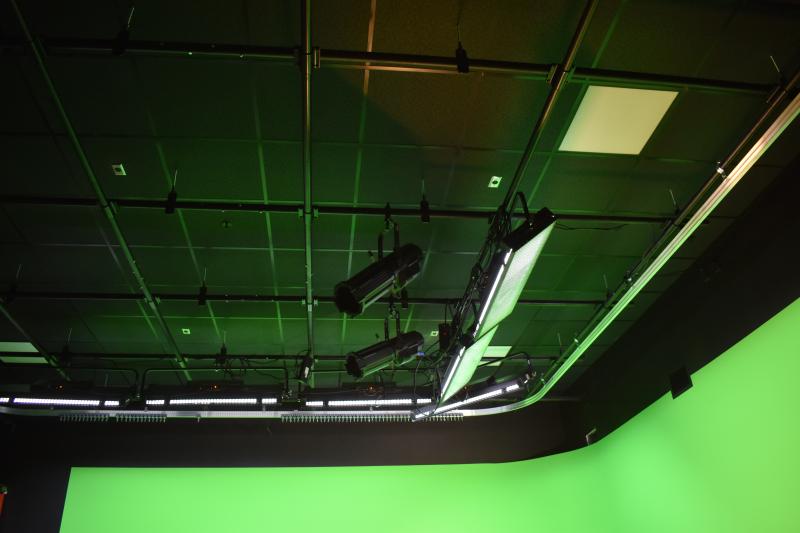 Technical ceiling. (Photo by Sarah Thompson)
Technical ceiling. (Photo by Sarah Thompson)
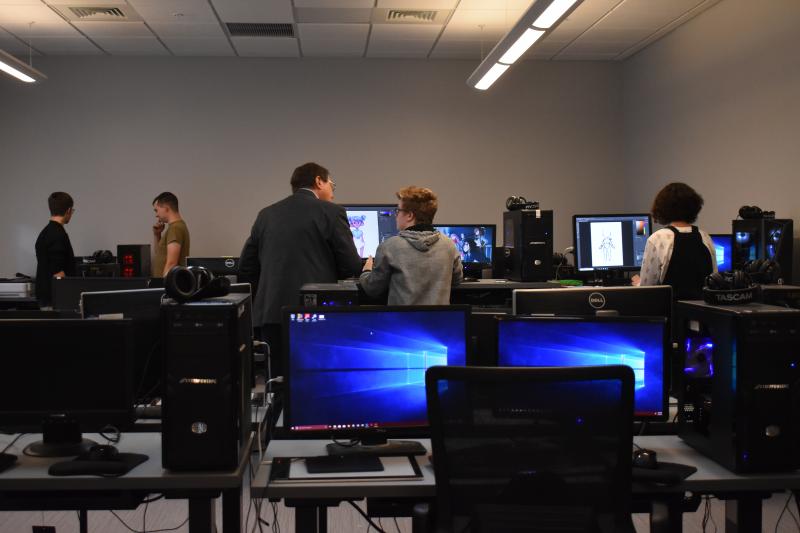 Digital arts. (Photo by Sarah Thompson)
Digital arts. (Photo by Sarah Thompson)
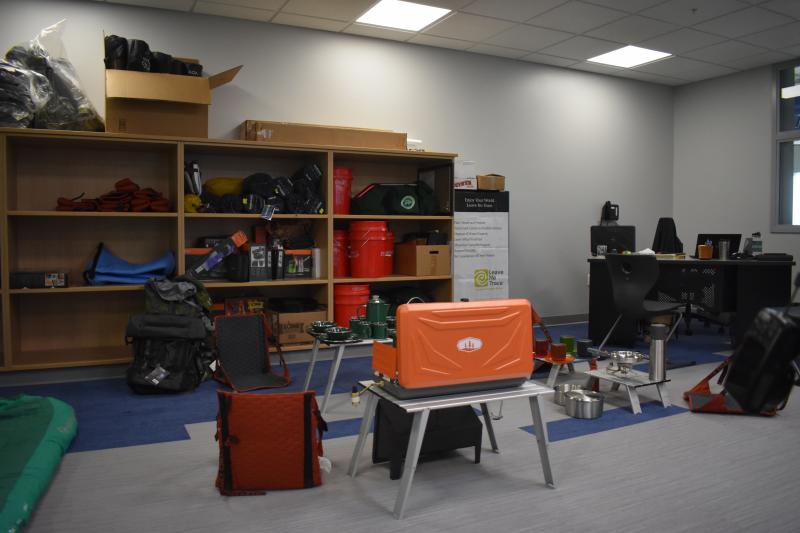 Outdoor Leadership begins with proper equipment. (Photo by Sarah Thompson)
Outdoor Leadership begins with proper equipment. (Photo by Sarah Thompson)
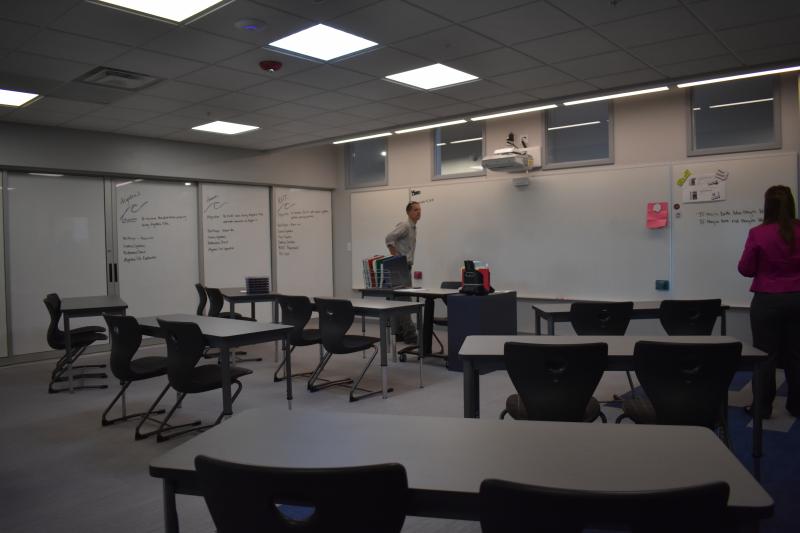 A regular classroom. (Photo by Sarah Thompson)
A regular classroom. (Photo by Sarah Thompson)
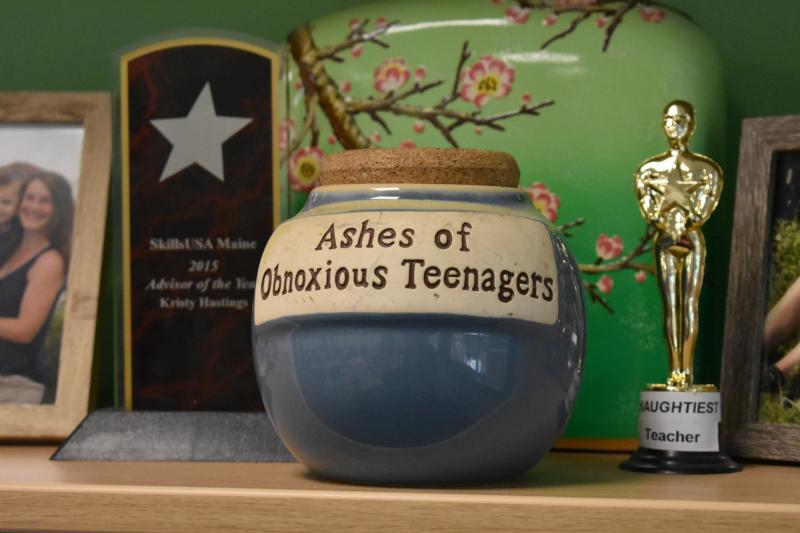 (Photo by Sarah Thompson)
(Photo by Sarah Thompson)
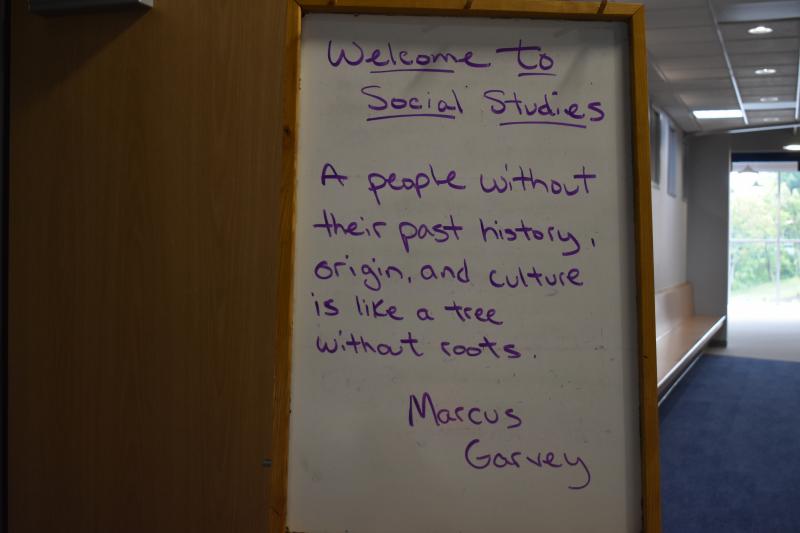 (Photo by Sarah Thompson)
(Photo by Sarah Thompson)
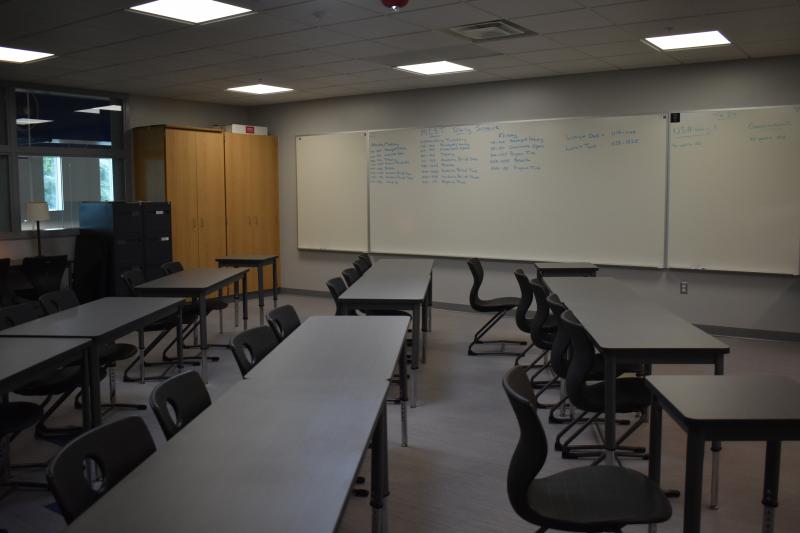 (Photo by Sarah Thompson)
(Photo by Sarah Thompson)
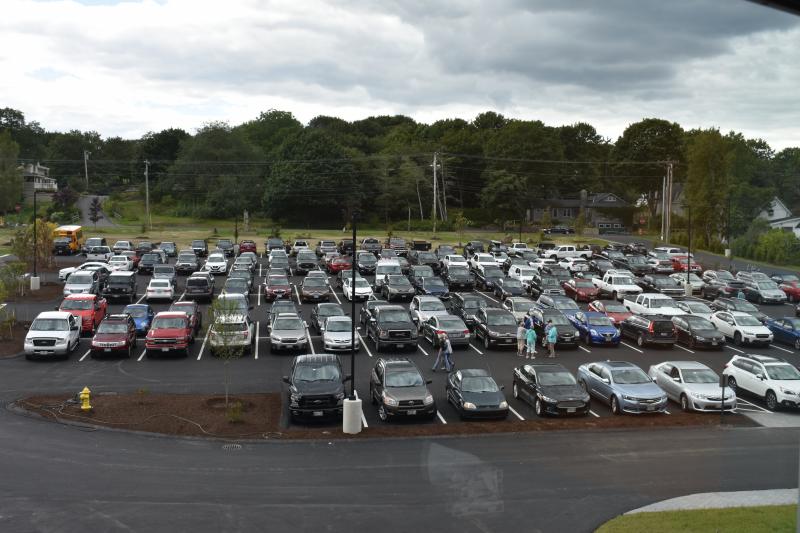 A full parking lot tells of the community’s interest in the school. (Photo by Sarah Thompson)
A full parking lot tells of the community’s interest in the school. (Photo by Sarah Thompson)
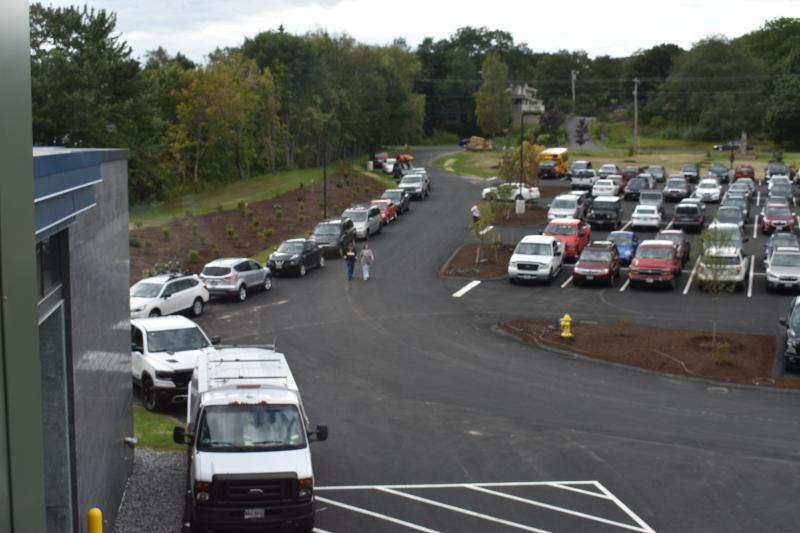 Overflow. (Photo by Sarah Thompson)
Overflow. (Photo by Sarah Thompson)
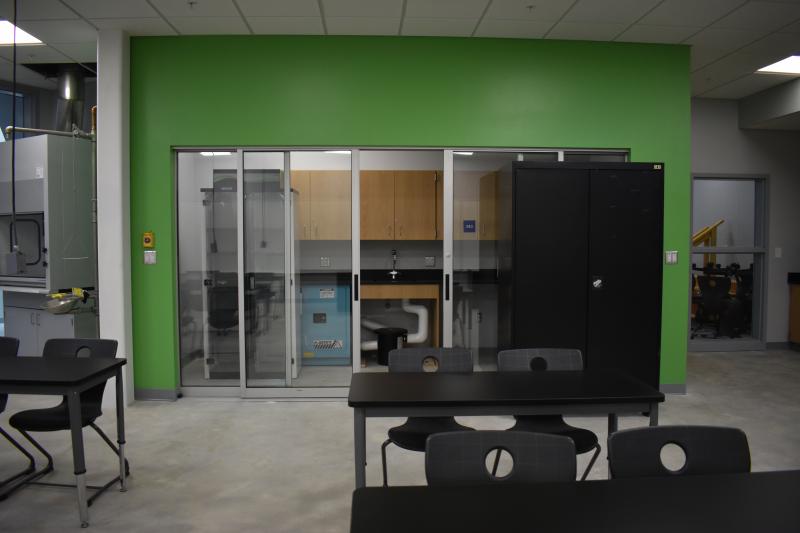 Science room. (Photo by Sarah Thompson)
Science room. (Photo by Sarah Thompson)
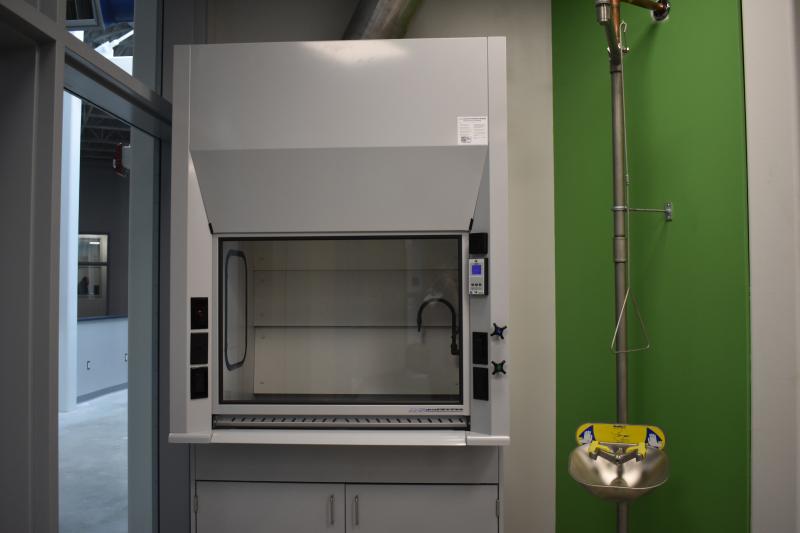 (Photo by Sarah Thompson)
(Photo by Sarah Thompson)
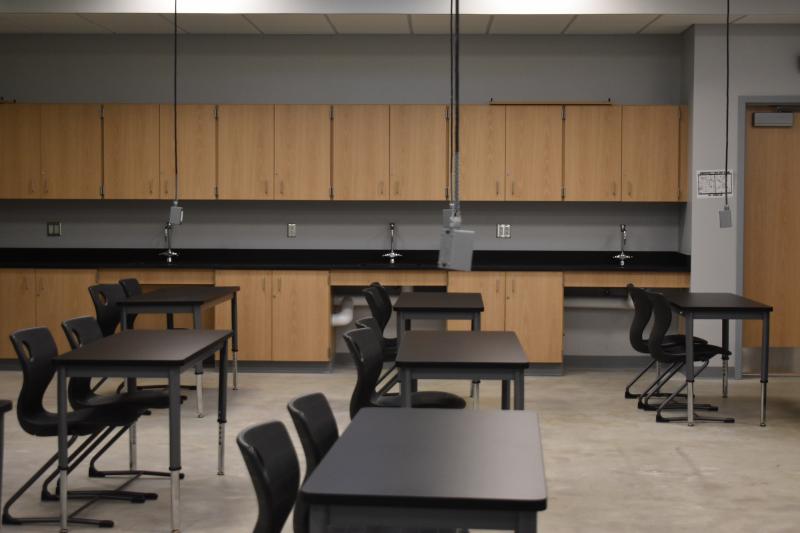 (Photo by Sarah Thompson)
(Photo by Sarah Thompson)
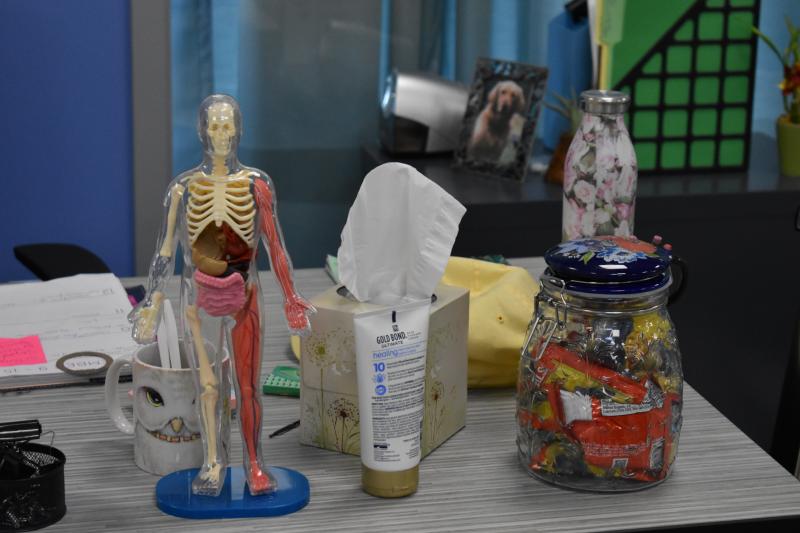 (Photo by Sarah Thompson)
(Photo by Sarah Thompson)
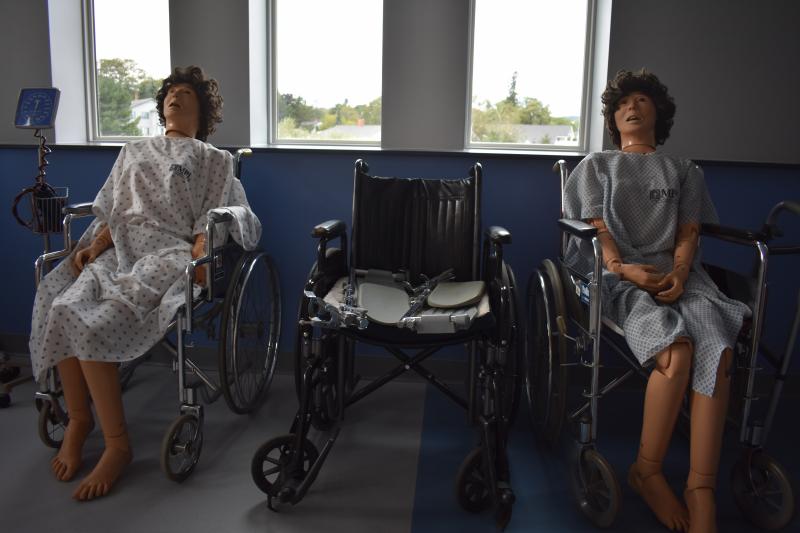 I’m starting to get a bit nervous also. (Photo by Sarah Thompson)
I’m starting to get a bit nervous also. (Photo by Sarah Thompson)
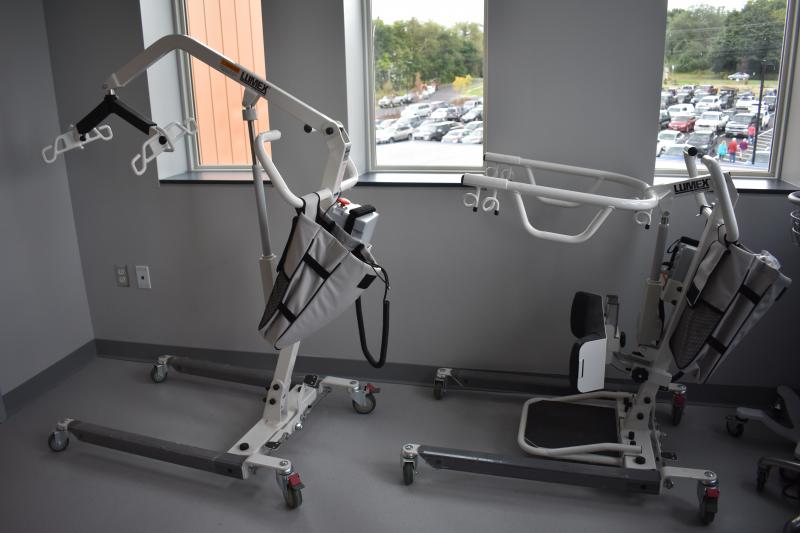 (Photo by Sarah Thompson)
(Photo by Sarah Thompson)
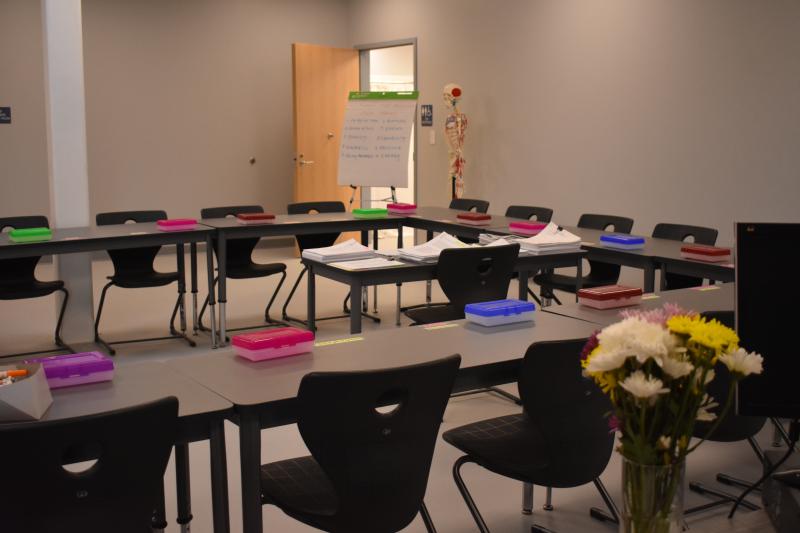 Health Occupations classroom. (Photo by Sarah Thompson)
Health Occupations classroom. (Photo by Sarah Thompson)
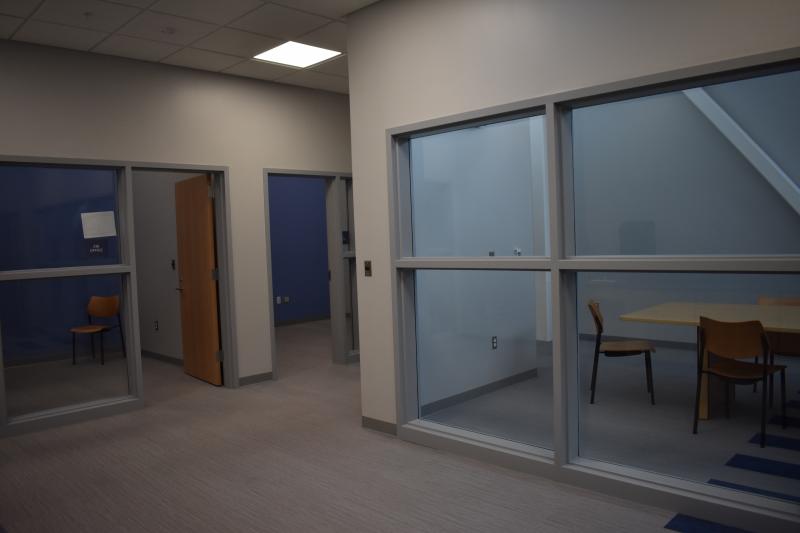 Kennebec Valley Communications Center suite. (Photo by Sarah Thompson)
Kennebec Valley Communications Center suite. (Photo by Sarah Thompson)
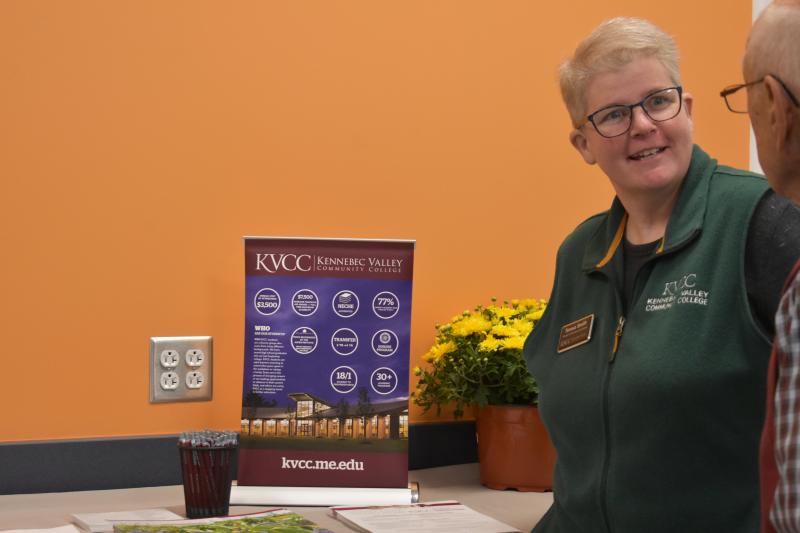 (Photo by Sarah Thompson)
(Photo by Sarah Thompson)
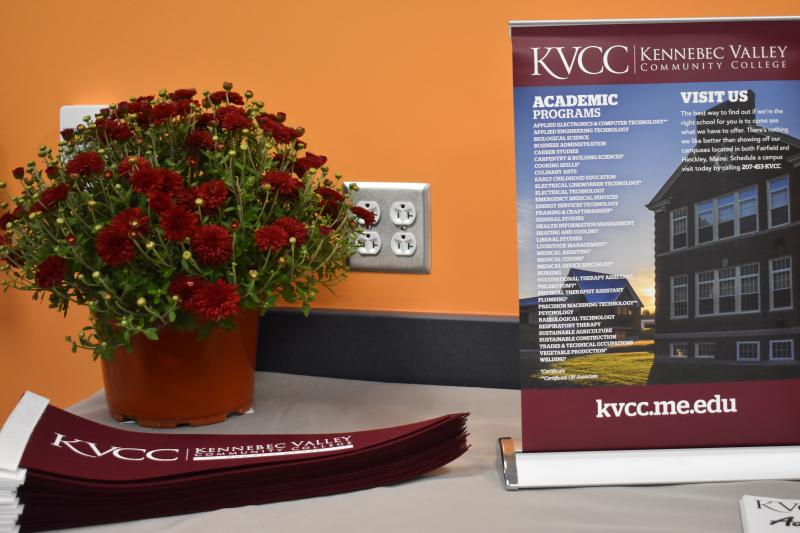 (Photo by Sarah Thompson)
(Photo by Sarah Thompson)
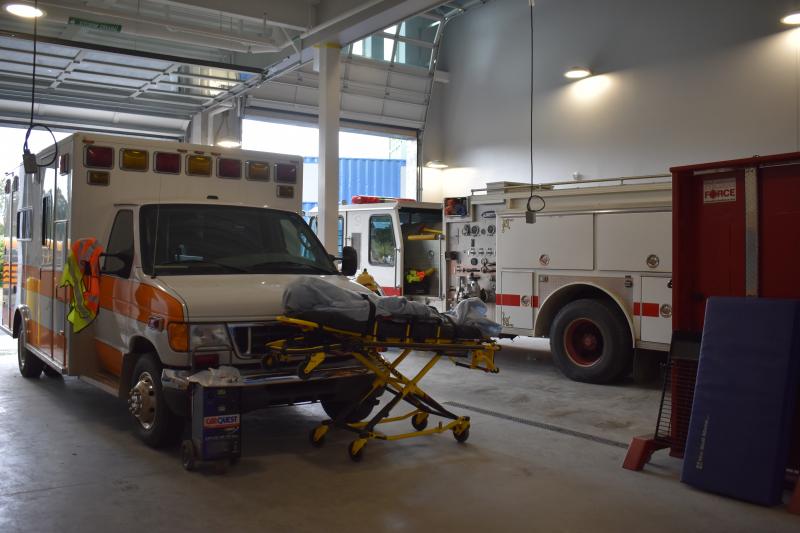 Firefighting/EMT. (Photo by Sarah Thompson)
Firefighting/EMT. (Photo by Sarah Thompson)
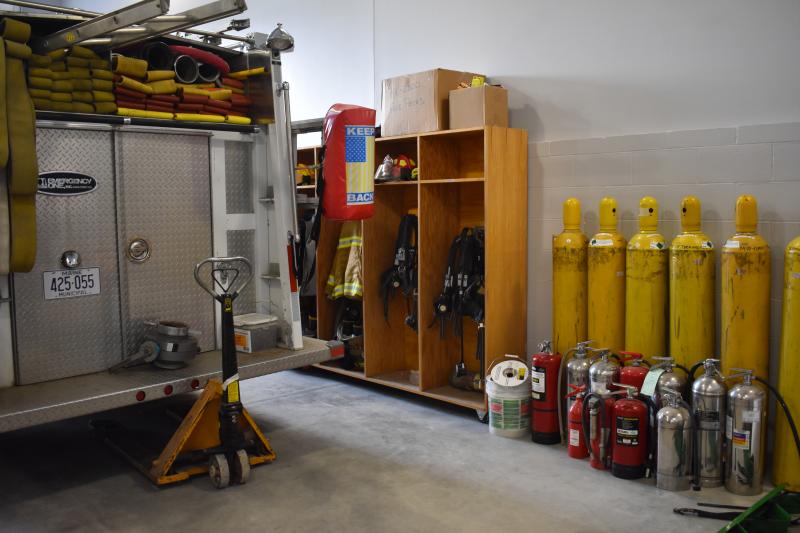 (Photo by Sarah Thompson)
(Photo by Sarah Thompson)
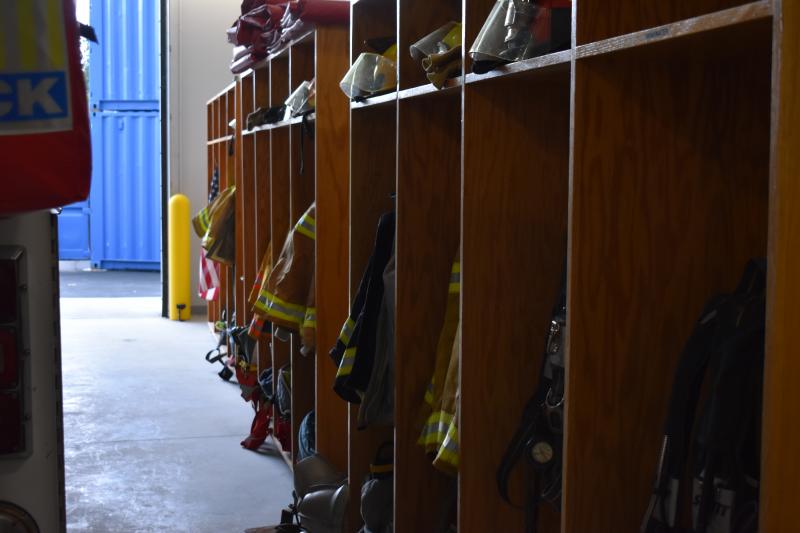 (Photo by Sarah Thompson)
(Photo by Sarah Thompson)
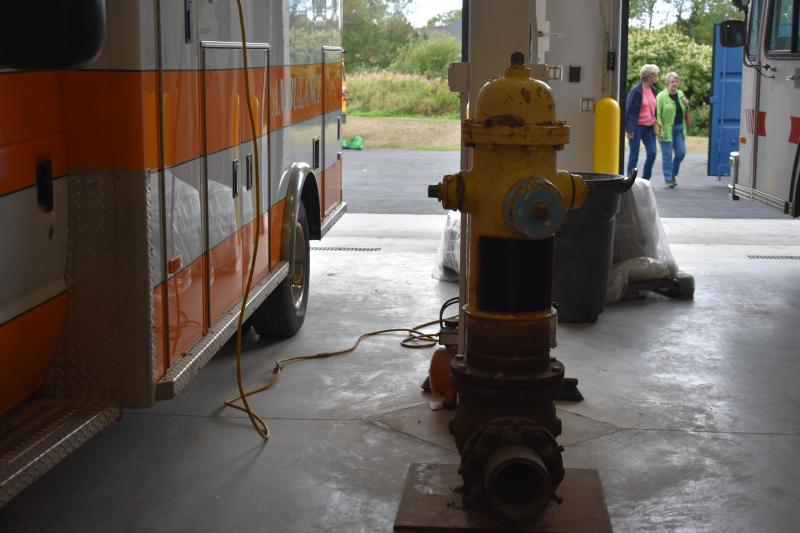 (Photo by Sarah Thompson)
(Photo by Sarah Thompson)
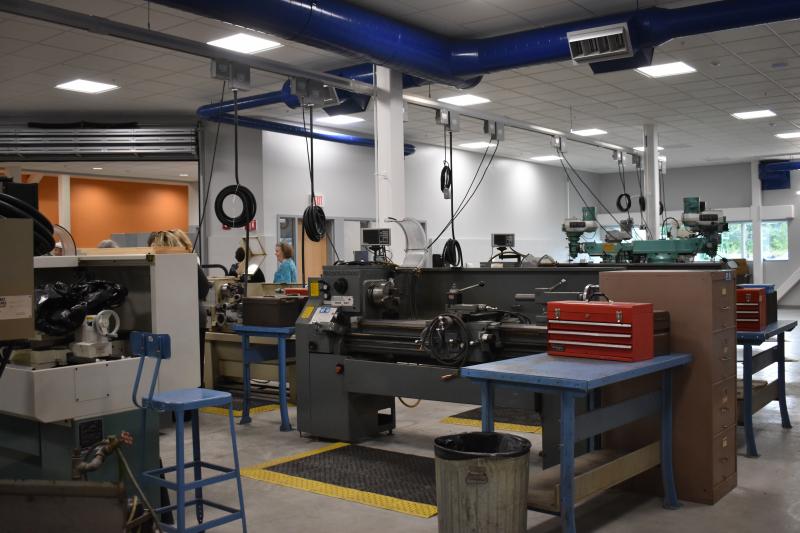 (Photo by Sarah Thompson)
(Photo by Sarah Thompson)
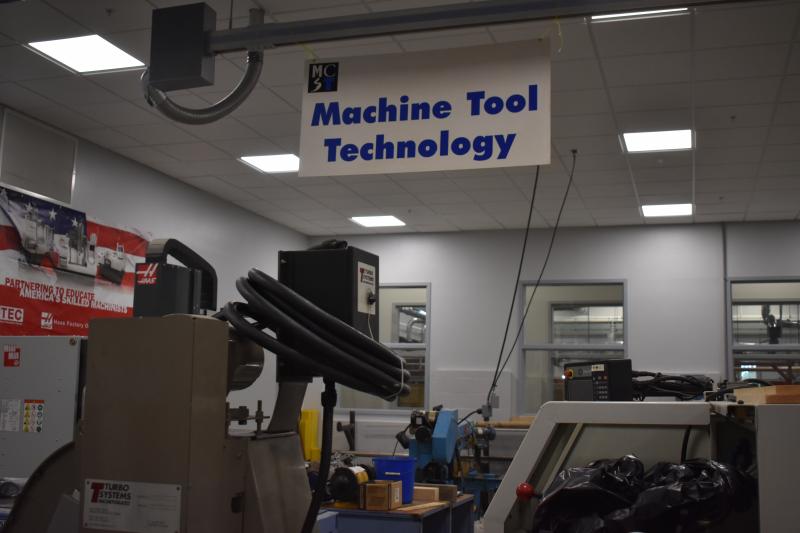 (Photo by Sarah Thompson)
(Photo by Sarah Thompson)
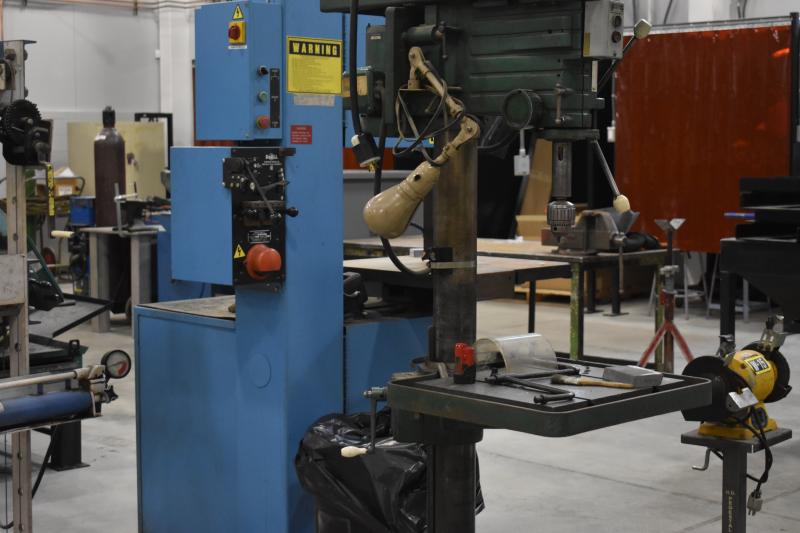 (Photo by Sarah Thompson)
(Photo by Sarah Thompson)
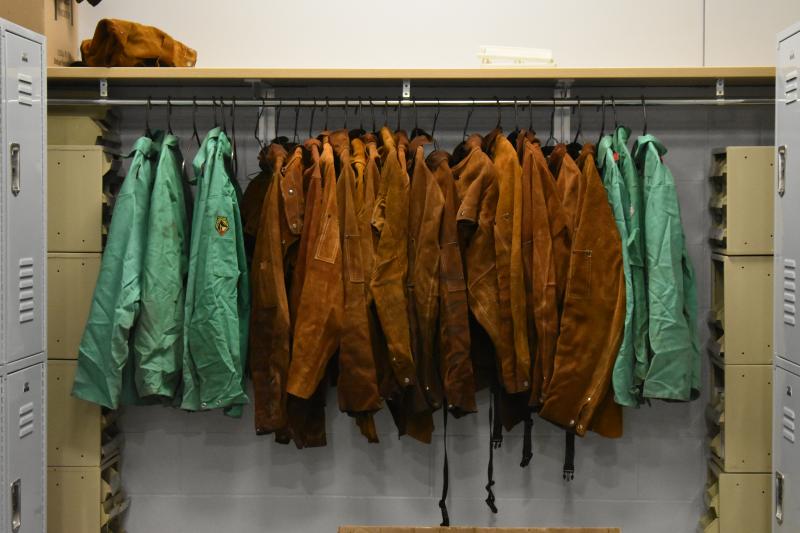 (Photo by Sarah Thompson)
(Photo by Sarah Thompson)
 (Photo by Sarah Thompson)
(Photo by Sarah Thompson)
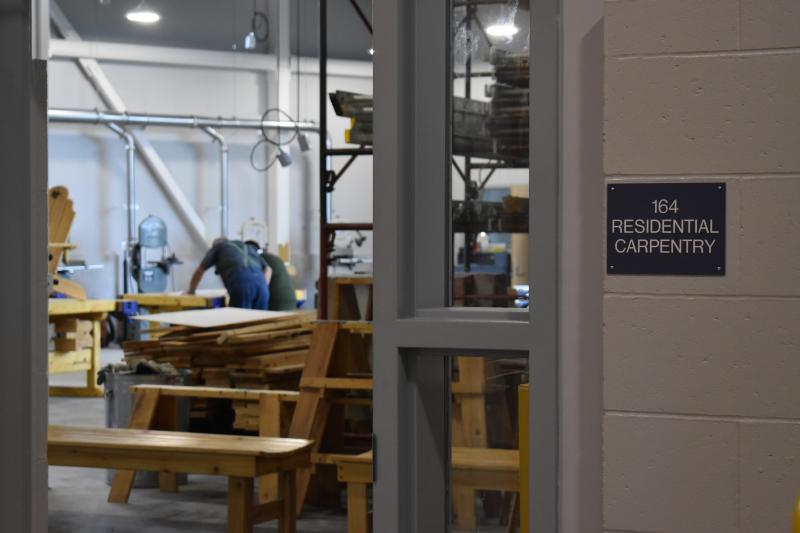 (Photo by Sarah Thompson)
(Photo by Sarah Thompson)
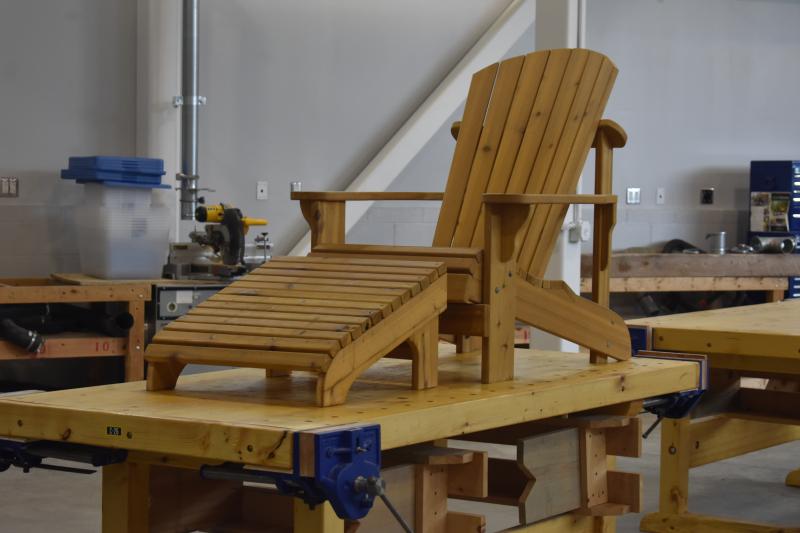 (Photo by Sarah Thompson)
(Photo by Sarah Thompson)
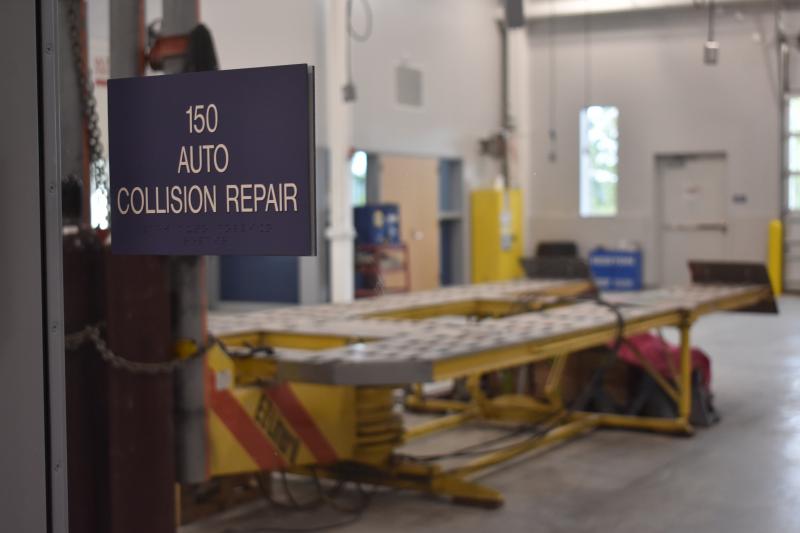 (Photo by Sarah Thompson)
(Photo by Sarah Thompson)
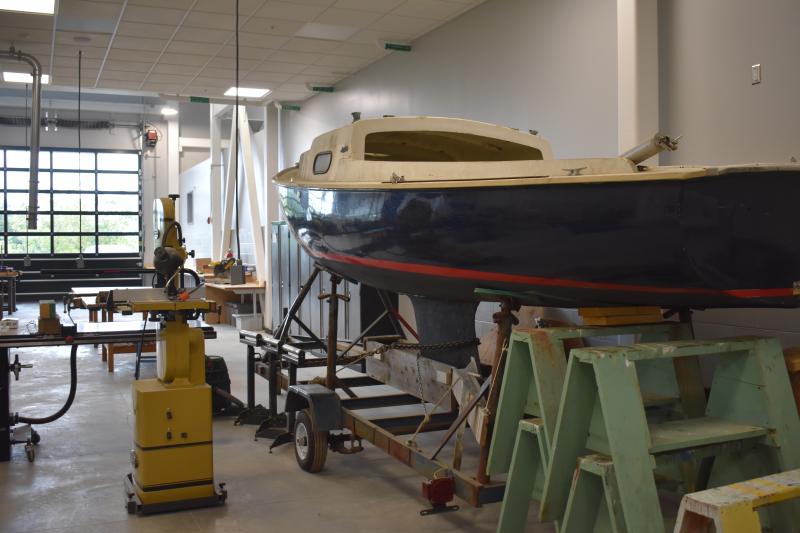 Marine Technology. (Photo by Sarah Thompson)
Marine Technology. (Photo by Sarah Thompson)
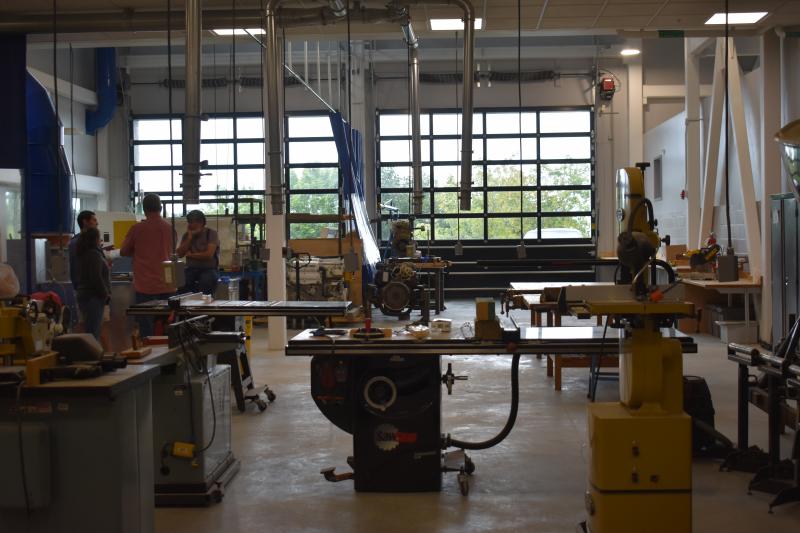 (Photo by Sarah Thompson)
(Photo by Sarah Thompson)
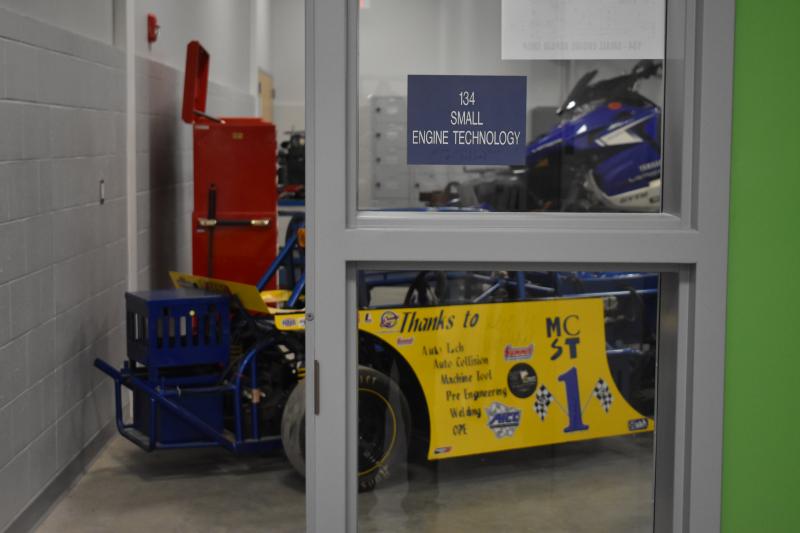 (Photo by Sarah Thompson)
(Photo by Sarah Thompson)
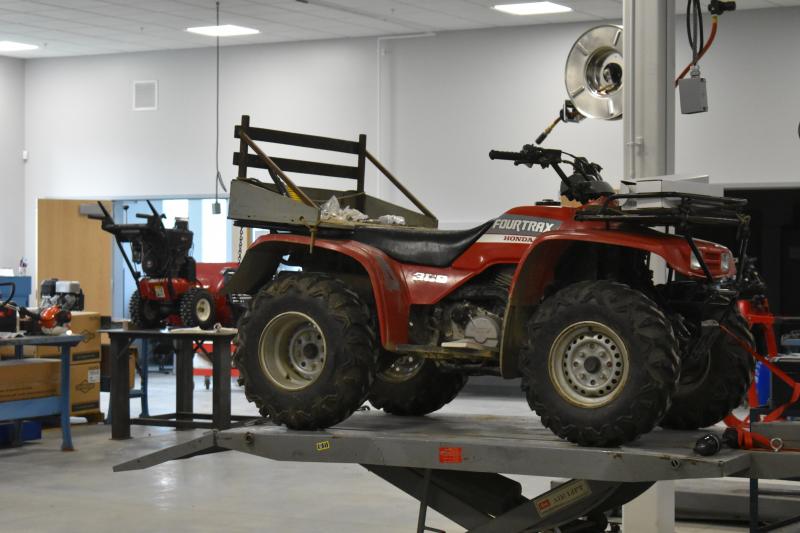 (Photo by Sarah Thompson)
(Photo by Sarah Thompson)
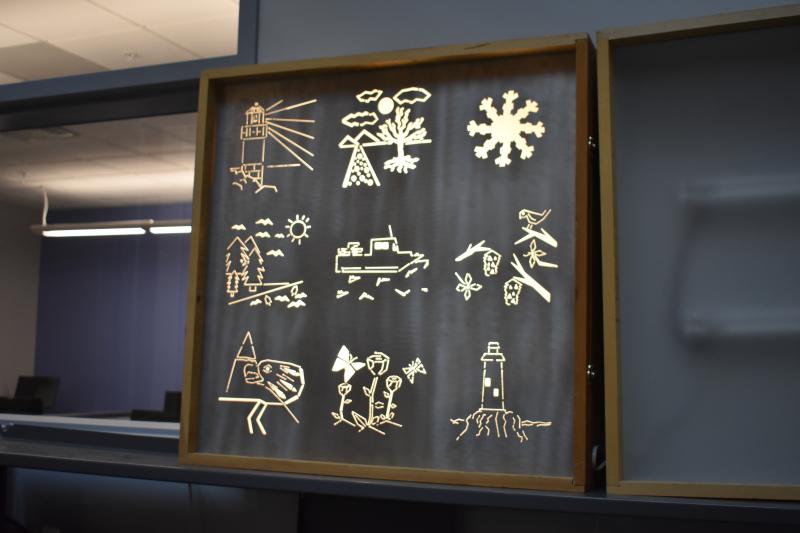 Middle School depictions in the Pre-Engineering area. (Photo by Sarah Thompson)
Middle School depictions in the Pre-Engineering area. (Photo by Sarah Thompson)
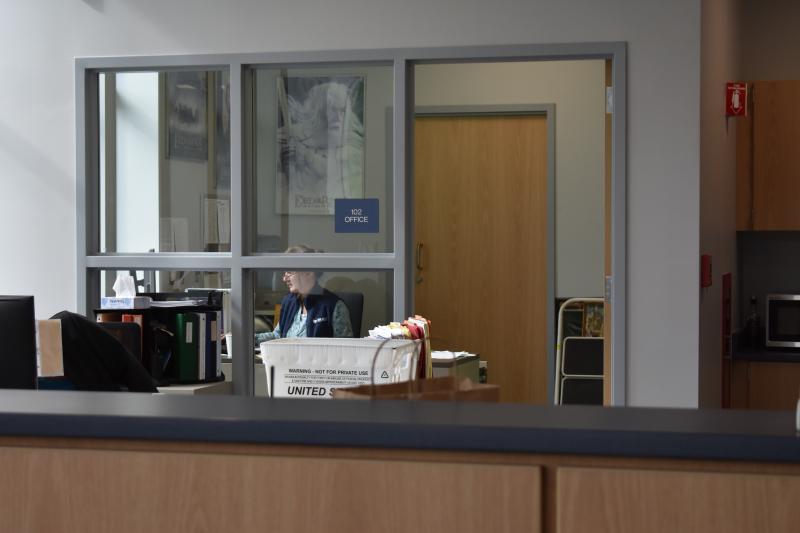 (Photo by Sarah Thompson)
(Photo by Sarah Thompson)
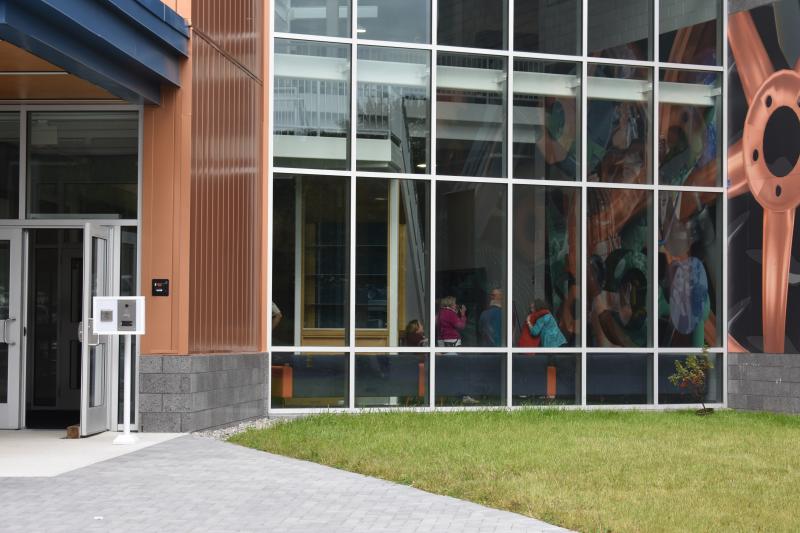 (Photo by Sarah Thompson)
(Photo by Sarah Thompson)
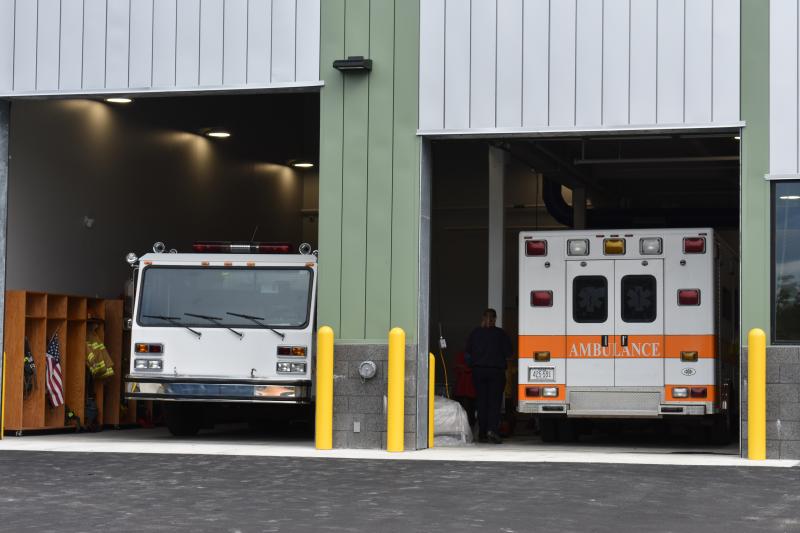 (Photo by Sarah Thompson)
(Photo by Sarah Thompson)
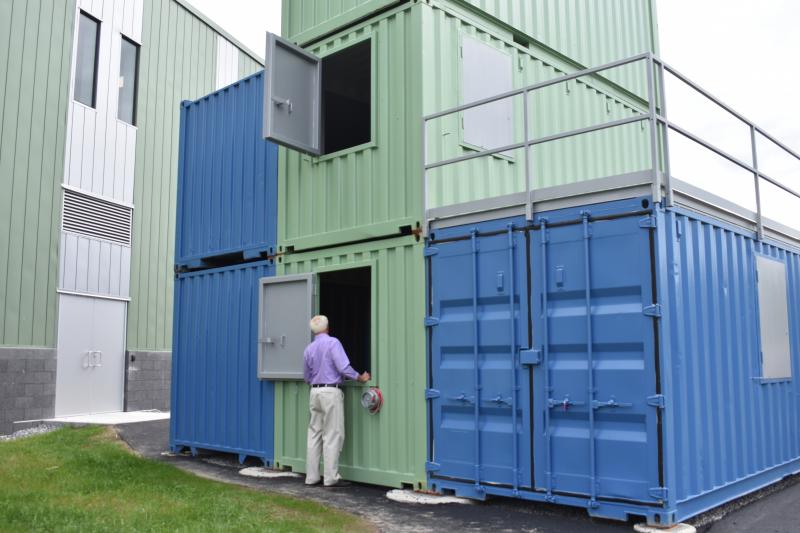 (Photo by Sarah Thompson)
(Photo by Sarah Thompson)
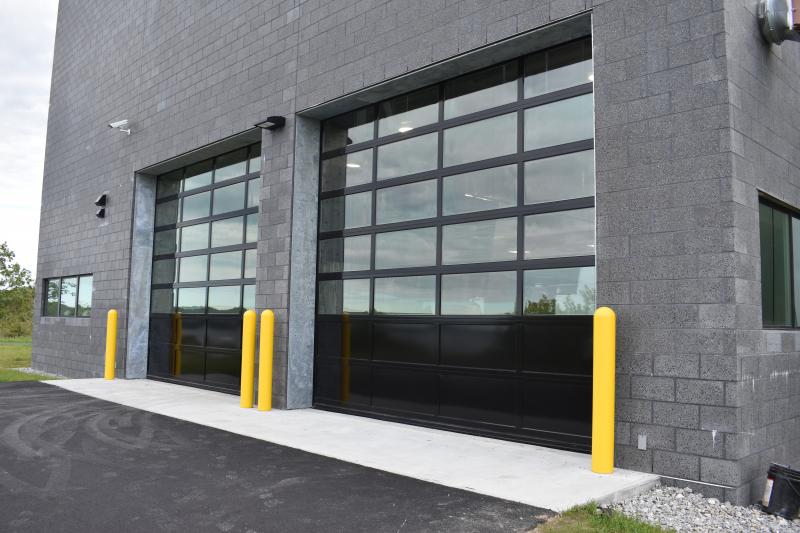 (Photo by Sarah Thompson)
(Photo by Sarah Thompson)
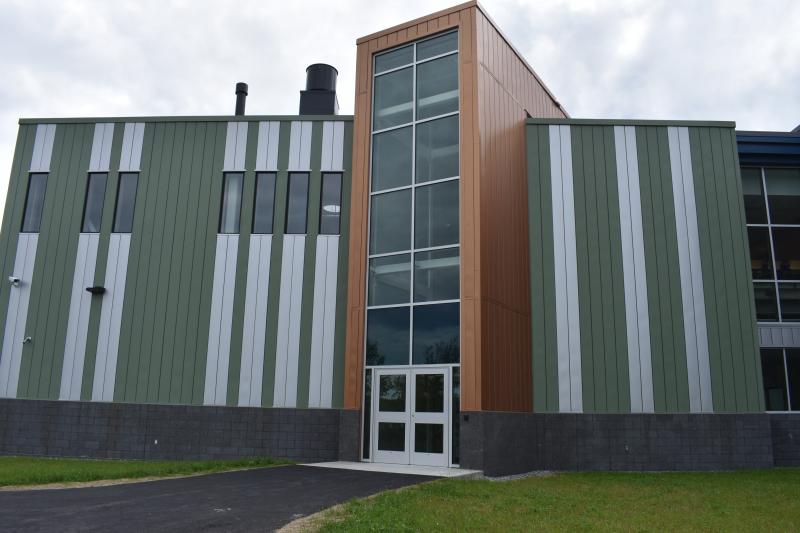 (Photo by Sarah Thompson)
(Photo by Sarah Thompson)
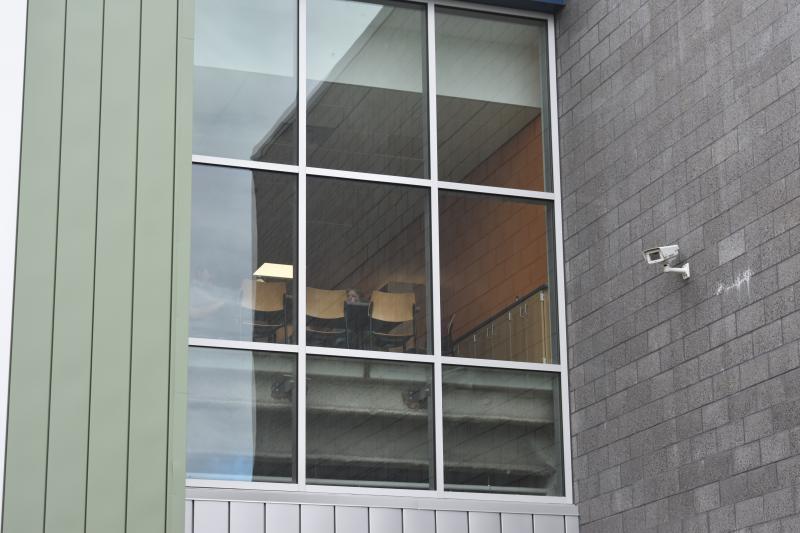 (Photo by Sarah Thompson)
(Photo by Sarah Thompson)
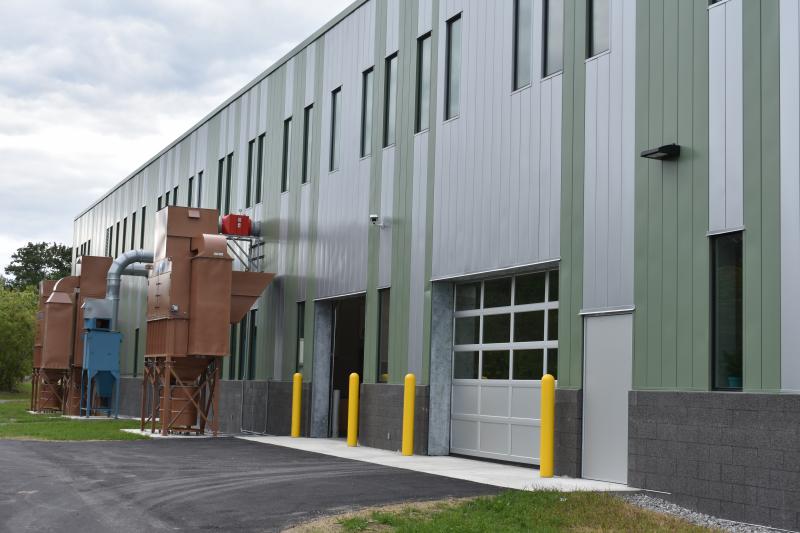 (Photo by Sarah Thompson)
(Photo by Sarah Thompson)
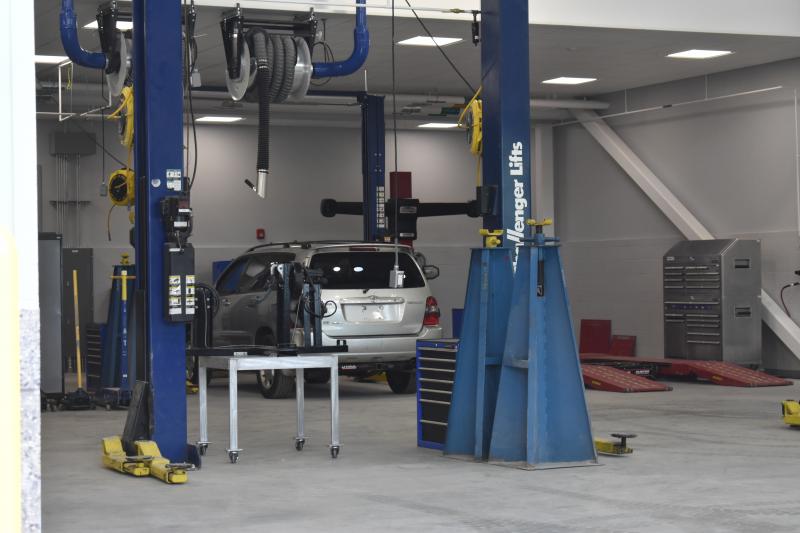 (Photo by Sarah Thompson)
(Photo by Sarah Thompson)
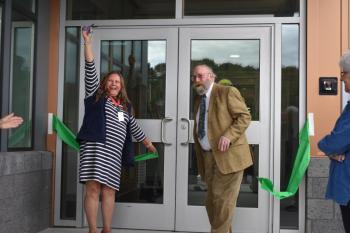 Mid-Coast School of Technology Director Beth Fisher and Board member Jerry White cut a ribbon to welcome the community into the new school building. (Photo by Sarah Thompson)
Mid-Coast School of Technology Director Beth Fisher and Board member Jerry White cut a ribbon to welcome the community into the new school building. (Photo by Sarah Thompson)
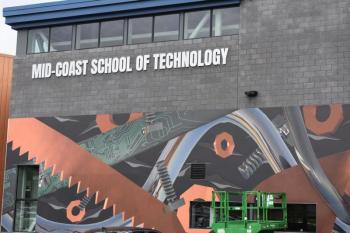 (Photo by Sarah Thompson)
(Photo by Sarah Thompson)
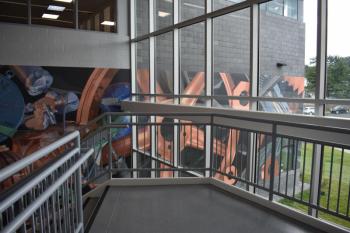 This mural, designed by students, extends inside and out. (Photo by Sarah Thompson)
This mural, designed by students, extends inside and out. (Photo by Sarah Thompson)
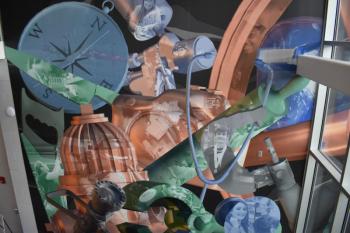 (Photo by Sarah Thompson)
(Photo by Sarah Thompson)
 (Photo by Sarah Thompson)
(Photo by Sarah Thompson)
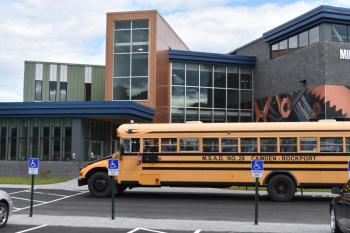 (Photo by Sarah Thompson)
(Photo by Sarah Thompson)
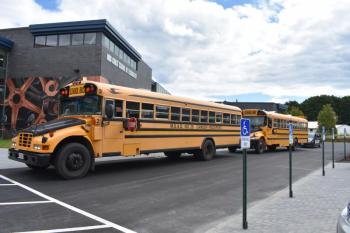 (Photo by Sarah Thompson)
(Photo by Sarah Thompson)
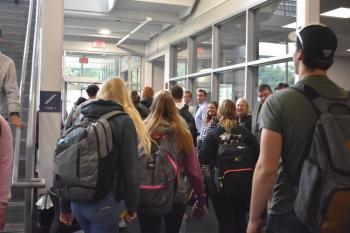 Students exit for the day prior to the community entering for a glimpse. (Photo by Sarah Thompson)
Students exit for the day prior to the community entering for a glimpse. (Photo by Sarah Thompson)
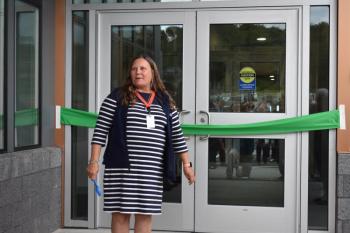 (Photo by Sarah Thompson)
(Photo by Sarah Thompson)
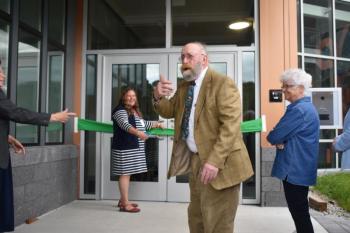 (Photo by Sarah Thompson)
(Photo by Sarah Thompson)
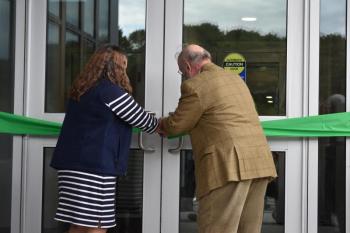 (Photo by Sarah Thompson)
(Photo by Sarah Thompson)
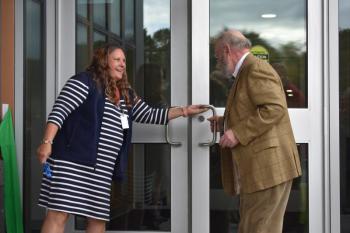 (Photo by Sarah Thompson)
(Photo by Sarah Thompson)
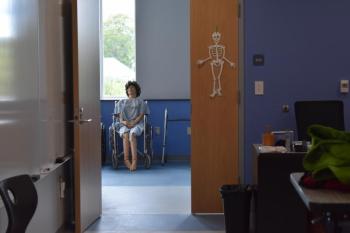 This chap isn’t exactly excited to be in the new CNA room. (Photo by Sarah Thompson)
This chap isn’t exactly excited to be in the new CNA room. (Photo by Sarah Thompson)
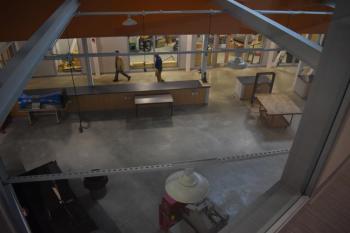 Looking down from above. (Photo by Sarah Thompson)
Looking down from above. (Photo by Sarah Thompson)
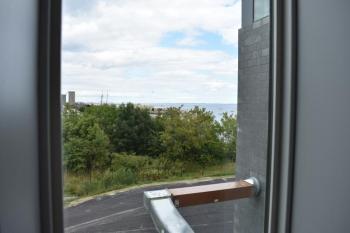 Oh, what a view. (Photo by Sarah Thompson)
Oh, what a view. (Photo by Sarah Thompson)
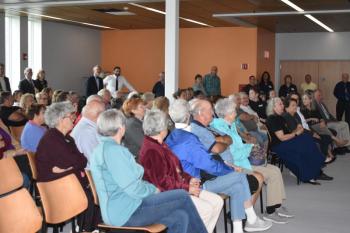 Stakeholders, representatives, and friends thank each other for their involvement in the school’s resurrection. (Photo by Sarah Thompson)
Stakeholders, representatives, and friends thank each other for their involvement in the school’s resurrection. (Photo by Sarah Thompson)
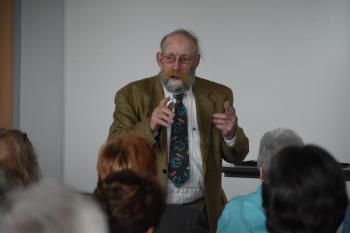 Board member Jerry White. (Photo by Sarah Thompson)
Board member Jerry White. (Photo by Sarah Thompson)
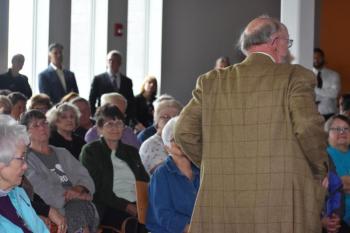 (Photo by Sarah Thompson)
(Photo by Sarah Thompson)
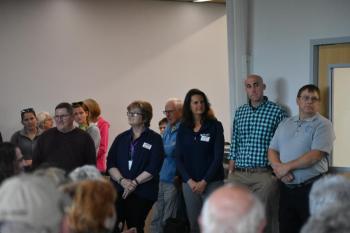 Some of the MCST teachers. (Photo by Sarah Thompson)
Some of the MCST teachers. (Photo by Sarah Thompson)
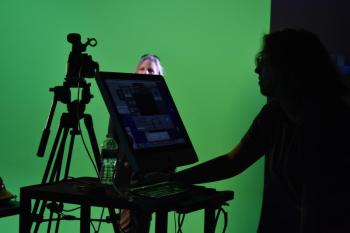 People touring the Design and Technology room walk along one green wall....(Photo by Sarah Thompson)
People touring the Design and Technology room walk along one green wall....(Photo by Sarah Thompson)
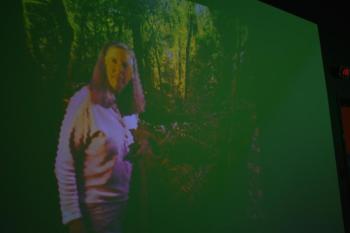 ...and appear on an opposite screen. (Photo by Sarah Thompson)
...and appear on an opposite screen. (Photo by Sarah Thompson)
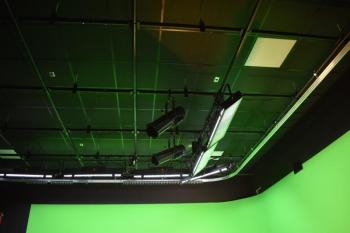 Technical ceiling. (Photo by Sarah Thompson)
Technical ceiling. (Photo by Sarah Thompson)
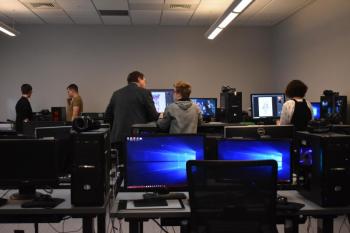 Digital arts. (Photo by Sarah Thompson)
Digital arts. (Photo by Sarah Thompson)
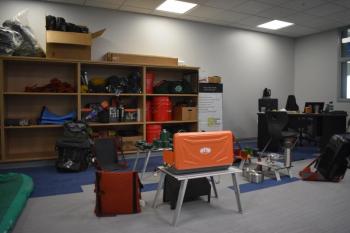 Outdoor Leadership begins with proper equipment. (Photo by Sarah Thompson)
Outdoor Leadership begins with proper equipment. (Photo by Sarah Thompson)
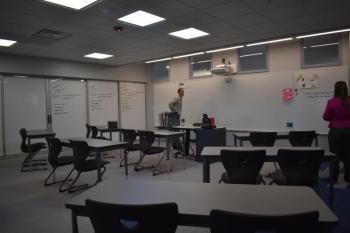 A regular classroom. (Photo by Sarah Thompson)
A regular classroom. (Photo by Sarah Thompson)
 (Photo by Sarah Thompson)
(Photo by Sarah Thompson)
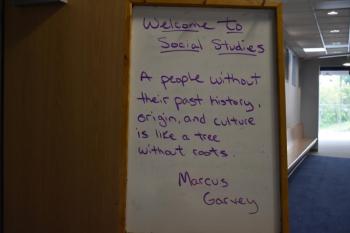 (Photo by Sarah Thompson)
(Photo by Sarah Thompson)
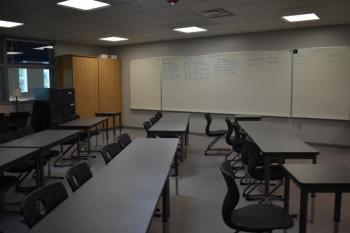 (Photo by Sarah Thompson)
(Photo by Sarah Thompson)
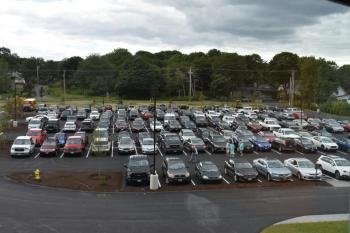 A full parking lot tells of the community’s interest in the school. (Photo by Sarah Thompson)
A full parking lot tells of the community’s interest in the school. (Photo by Sarah Thompson)
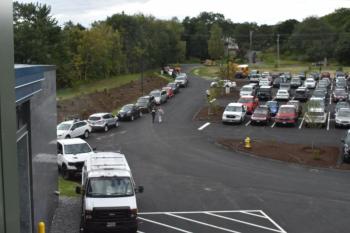 Overflow. (Photo by Sarah Thompson)
Overflow. (Photo by Sarah Thompson)
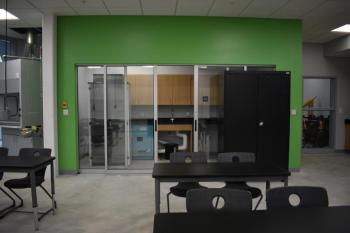 Science room. (Photo by Sarah Thompson)
Science room. (Photo by Sarah Thompson)
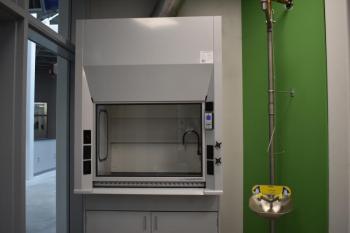 (Photo by Sarah Thompson)
(Photo by Sarah Thompson)
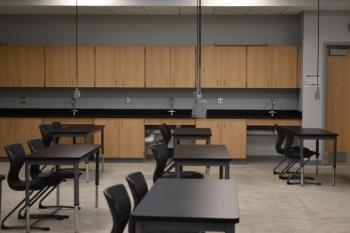 (Photo by Sarah Thompson)
(Photo by Sarah Thompson)
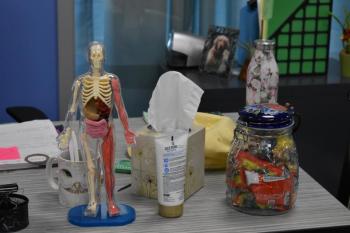 (Photo by Sarah Thompson)
(Photo by Sarah Thompson)
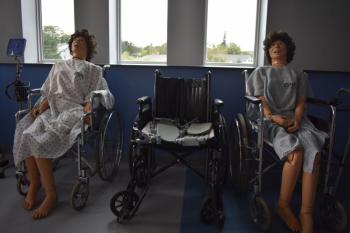 I’m starting to get a bit nervous also. (Photo by Sarah Thompson)
I’m starting to get a bit nervous also. (Photo by Sarah Thompson)
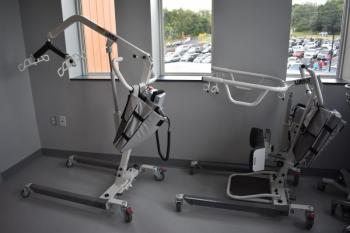 (Photo by Sarah Thompson)
(Photo by Sarah Thompson)
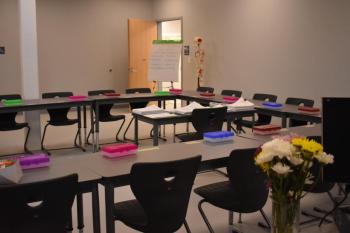 Health Occupations classroom. (Photo by Sarah Thompson)
Health Occupations classroom. (Photo by Sarah Thompson)
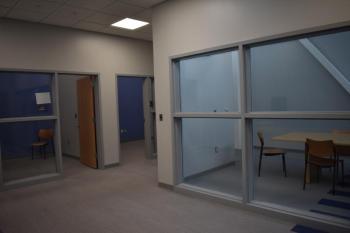 Kennebec Valley Communications Center suite. (Photo by Sarah Thompson)
Kennebec Valley Communications Center suite. (Photo by Sarah Thompson)
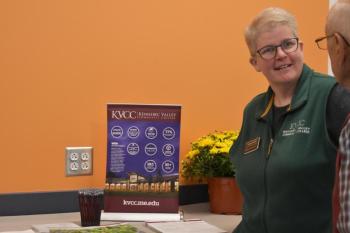 (Photo by Sarah Thompson)
(Photo by Sarah Thompson)
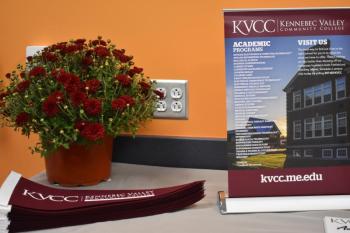 (Photo by Sarah Thompson)
(Photo by Sarah Thompson)
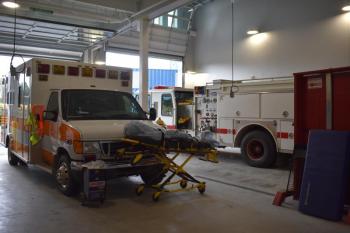 Firefighting/EMT. (Photo by Sarah Thompson)
Firefighting/EMT. (Photo by Sarah Thompson)
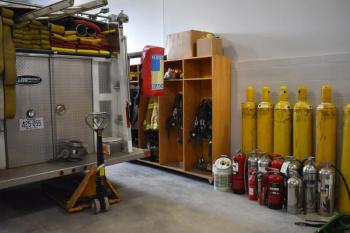 (Photo by Sarah Thompson)
(Photo by Sarah Thompson)
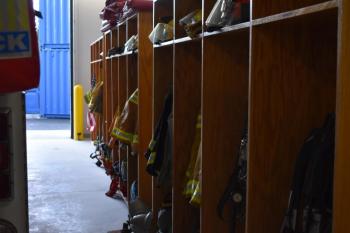 (Photo by Sarah Thompson)
(Photo by Sarah Thompson)
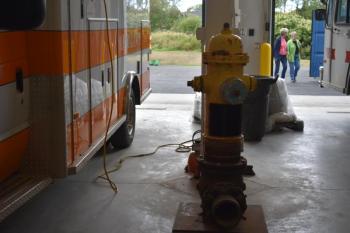 (Photo by Sarah Thompson)
(Photo by Sarah Thompson)
 (Photo by Sarah Thompson)
(Photo by Sarah Thompson)
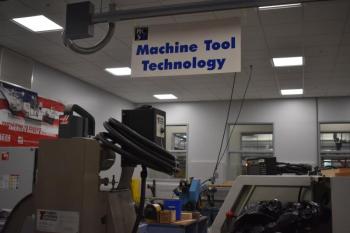 (Photo by Sarah Thompson)
(Photo by Sarah Thompson)
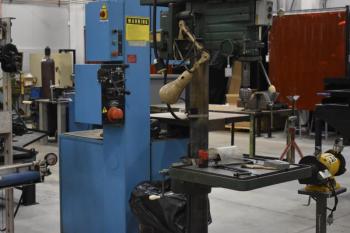 (Photo by Sarah Thompson)
(Photo by Sarah Thompson)
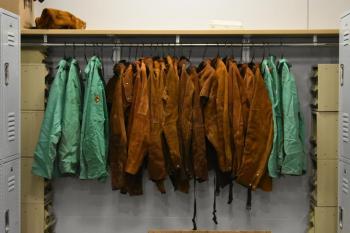 (Photo by Sarah Thompson)
(Photo by Sarah Thompson)
 (Photo by Sarah Thompson)
(Photo by Sarah Thompson)
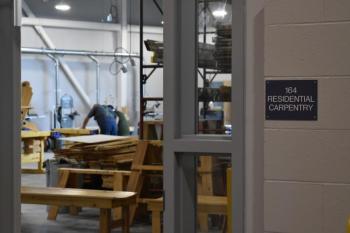 (Photo by Sarah Thompson)
(Photo by Sarah Thompson)
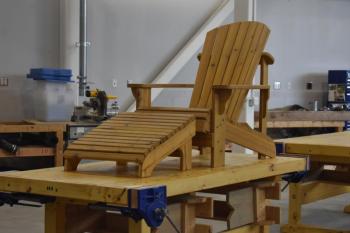 (Photo by Sarah Thompson)
(Photo by Sarah Thompson)
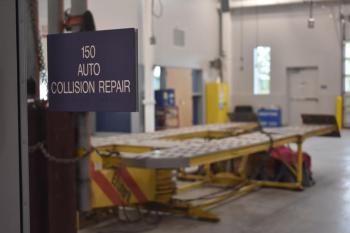 (Photo by Sarah Thompson)
(Photo by Sarah Thompson)
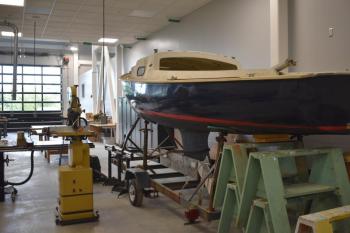 Marine Technology. (Photo by Sarah Thompson)
Marine Technology. (Photo by Sarah Thompson)
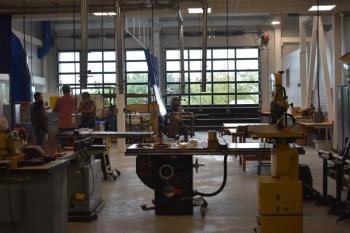 (Photo by Sarah Thompson)
(Photo by Sarah Thompson)
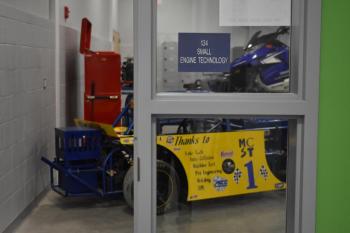 (Photo by Sarah Thompson)
(Photo by Sarah Thompson)
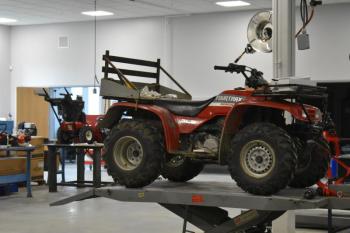 (Photo by Sarah Thompson)
(Photo by Sarah Thompson)
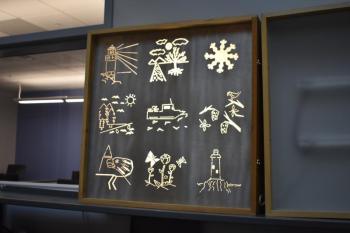 Middle School depictions in the Pre-Engineering area. (Photo by Sarah Thompson)
Middle School depictions in the Pre-Engineering area. (Photo by Sarah Thompson)
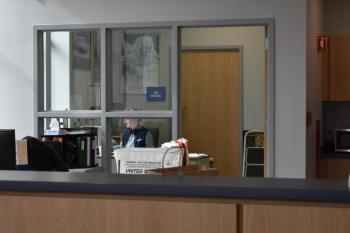 (Photo by Sarah Thompson)
(Photo by Sarah Thompson)
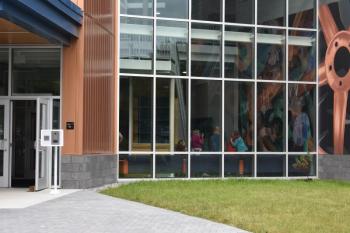 (Photo by Sarah Thompson)
(Photo by Sarah Thompson)
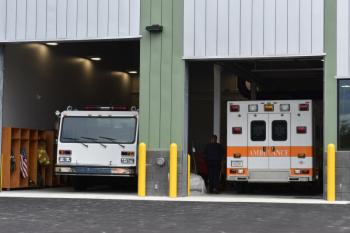 (Photo by Sarah Thompson)
(Photo by Sarah Thompson)
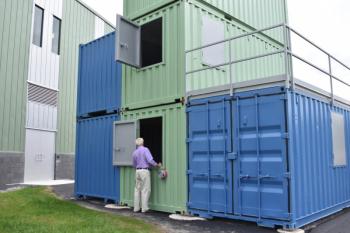 (Photo by Sarah Thompson)
(Photo by Sarah Thompson)
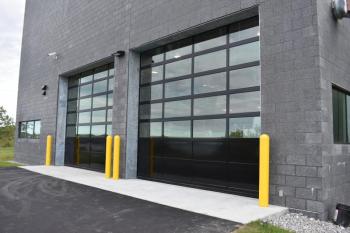 (Photo by Sarah Thompson)
(Photo by Sarah Thompson)
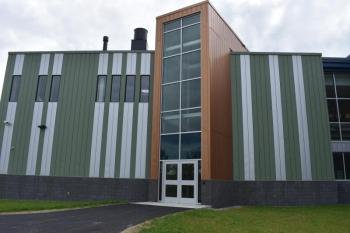 (Photo by Sarah Thompson)
(Photo by Sarah Thompson)
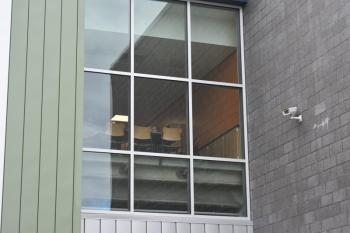 (Photo by Sarah Thompson)
(Photo by Sarah Thompson)
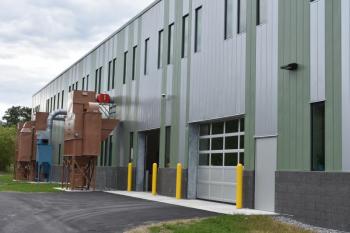 (Photo by Sarah Thompson)
(Photo by Sarah Thompson)
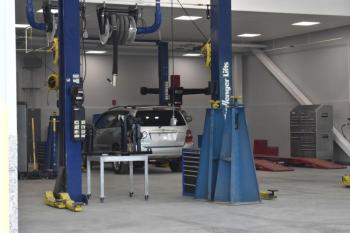 (Photo by Sarah Thompson)
(Photo by Sarah Thompson)
ROCKLAND — The concept of teamwork can be hard to grasp, according to Mid Coast School of Technology’s pre-engineering instructor. Once learned, however, the benefits accumulate and are widely spread.
MCST celebrated the construction of its new building at the start of a new academic year, with a ribbon-cutting ceremony and open house, Monday, Sept. 9.
Throughout the educational facility, and its curriculum, examples of inner collaboration and exterior involvement help lay a path toward economic and personal success.
Two years of meetings in several of the seven high school districts that send students to the vocational school, intertwined with two years of budget planning, review boards, community outreach, and demolition of the former building at 1 Main Street, in Rockland, caused Director Beth Fisher and Business Manager Sherry Moody many sleepless nights, recounted board member Jerry White, of North Haven, before a crowd at the school’s official opening.
Then, voters approved a $25 million bond.
Staff assisted in planning for the school. In return lies a new building, roughly 91,000 square feet in size, with wide windows, geothermal heating and cooling, modern equipment, and an autumn commitment to 1,000 rooftop solar panels, with an estimated 300 kilowatt output.
MCST is one of 27 vocational facilities in Maine, according to White, helping to not only generate skill sets, but to lay the foundation for future academic success. For example, one student in the pre-engineering field has already accumulated 12 college credits, helping to reduce his future college tuition and study time.
MCST is a “magnificent building that is for students, not for adults, unless you are taking an adult ed course,” said White. “The whole thing is predicated on training students for skills that are needed for today’s workforce.”
One former student from North Haven, who is not yet 18, will soon start in an apprentice program with a Maine construction company. His starting pay is $17 per hour. Upon finishing his apprenticeship, his pay increases to $25 per hour, according to White.
“Those are the kinds of jobs that we train for in this building,” he said. “And to date, sadly, Augusta, Washington, and most other state agencies do not recognize the value of basic journeymen skills for kids coming out of these programs in high school. We’ve got a big hole to fill, but we can fill it if we really work hard.”
Though the school is for the students, a point that White stressed multiple times in his welcoming remarks to politicians, stakeholders, and neighbors, that “student” broadens after 3 p.m.
Adult Ed is moving in as well, taking advantage of the space, classrooms, and the equipment.
Kennebec Valley Community College has reserved a suite of rooms and will slowly build a local curriculum through a Bring College to ME grant. KVCC will start with a health science certificate program and grow from there.
As a whole the building’s curriculum provides a setting of inter-departmental collaboration.
During the open house, the pre-engineering area displayed a lighted screen with images designed by area middle school students learning to draw using X and Y coordinates. Vocational students transferred the coordinates to CAD, handed off to the welding department to be cut on the plasma cutting machine. Carpentry built the cases, and engineering did the lighting.
This is one of several projects in which multiple departments work together, building the teamwork aspect, creating a final outcome of mutual benefit.
But, a visitor need not enter the ground floor to see that example. An approximately 130-ft wide, 30-foot tall mural lures the eye to the building before continuing to draw the eye, and the person, inside.
Though the mural is not paint, but a computer image printed on vinyl tiles, it was still designed by students under the guidance of the graphic design/animation instructor. With their vision in hand, they turned to Spruce Head artist Katharine Cartwright, an abstract mechanics painter, hired by MCST for the project.
The project took about a year to design, according to Cartwright, who’d attended the ceremony with her husband.
Because of its large scale, Cartwright and the students needed to consider the up-close perspective as well as the view from the road. They also had to consider the corner that divided the mural, the angle that the mural would be seen from the road, and the wall’s building material.
In the end, their considerations worked out, as did those who envisioned the walls, floors, classrooms, bathrooms, and programs on the inside.
“We have a wonderful building,” White told the community. “You built it, for students. We want to thank everybody, all the communities involved, as we simply say ‘Yes, we did it.’”
Click here for more information on Mid-Coast School of Technology (Region 8).
Reach Sarah Thompson at news@penbaypilot.com
Event Date
Address
United States

